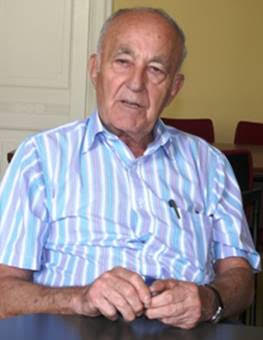
THE VOICE OF INTERNATIONAL LITHUANIA
|
VilNews has its own Google archive! Type a word in the above search box to find any article.
You can also follow us on Facebook. We have two different pages. Click to open and join.
|
Lithuania in the world
LT sportsmen in USA
- Posted by - (2) Comment

Šarūnas Jasikevičius, during EuroBasket 2011.
Text: Vin Karnila
Mention the words Sport and LITHUANIA and the next word you hear is always BASKETBALL. While a number of Lithuanian players have gone on to careers in the NBA it may surprise you to find out that quite a few Lithuanian athletes have had successful professional careers in the U.S.A. in other sports as well. What may be even a little more surprising is that these athletes excelled in what are considered “American” sports. As an example, did you know that the two players that most people say were the greatest players in the National Football League were Lithuanians?
BASKETBALL
Basketball is the sport that has tied Lithuania and USA closest together, so let’s first introduce you to the Lithuanian basketball stars “over there”.
Sarunas Jasikevičius
In July 2005 Sarunas Jasikevičius signed a three year contact with the Indian Pacers of the NBA. The point guard, who won three consecutive Euroleague championships, agreed to a three-year deal with the Pacers. Back in 1998, he was a solid wing player with Maryland, known for his shooting and intelligent play. He went back to his native Lithuania and plied his skills in club ball in Europe, becoming one of the best at his position. Arunas said “European ball is getting closer to the level of the NBA. I don't feel I have to play there to prove myself as a player,“
Žydrunas Ilgauskas

After being drafted by the Cleveland Cavaliers, Žydrunas Ilgauskas was selected to play in the 1997-98 Schick All-Rookie First Team. He was named MVP of the game, totaling a game-high 18 points and 7 rebounds, during the 1998 NBA All-Star Weekend in New York. Zydrunas led the Cavaliers in 1997-98 in field-goal percentage and blocked shots, ranked 2nd in rebounds, and 3rd in scoring. Unfortunately, he missed the entire 1996-97 season after undergoing surgery on his right foot. Ilgauskas rebounded to be named to the Eastern Conference All-Star Team in the 2002-03 season.
http://www.youtube.com/watch?v=Q-3z39HQwfg
Arvydas Sabonis

Arvydas Sabonis, now retired from the NBA, has been considered the best big man in the basketball world. In 1995 he said: "There's nothing left for me to prove in Europe or in the basketball world. Only the NBA remains."
But before that, he had been leading the Soviet national team to a gold medal at the 1988 Olympic Games in Seoul, South Korea. He also helped Lithuania to a bronze medal at the 1992 Olympics in Barcelona, and a second-place finish in the 1995 European Championships in Greece. In an 11-year professional career spent with club teams in the former Soviet Union and then in the Spanish League, Sabonis has led his squads to five league championships and has been named European Player of the Year four times by various publications. On August 20, 2010, Sabonis was inducted into the FIBA Hall of Fame in recognition of his great play in international competition.
http://www.youtube.com/watch?v=rsG9oApZtVI
Šarunas Marčiulionis

Šarunas Marčiulionis was a deadeye jump-shooter and capable of ferocious drives to the basket. He was a 1988 Olympic Games Gold Medal Champion in Seoul with Arvydas Sabonis.
Marčiulionis started his pro basketball career with Statyba Vilnius in the USSR League, the forerunner of the VTB United League in 1981. Drafted by the Golden State Warriors in the 6th round of the 1987 NBA Draft. He moved to the NBA in 1989 and he played four years with the Warriors, finishing as the runner-up for the Sixth Man of the Year Award in both 1992 and 1993. Marčiulionis became one of the first Europeans to get significant playing time in the NBA, helping to lead the way for the internationalization of the league in the late 1990s. After missing a year and a half with a leg injury, he was traded to the Seattle Super Sonics in 1994, then traded to the Sacramento Kings in 1995, and he finished his NBA career with the Denver Nuggets in the 1996-97 season. Having a career hampered by injury, he was on brink of making a real impression on the league before getting hurt.
Sarunas is today known as a hotel owner in Vilnius, as Founder of the Basketball Funds in Lithuania and the USA, as Founder of a private Basketball School and the Lithuanian Basketball League. In April, 1998 Sarunas became Extraordinary and Minister Pleni Potenciary of the Embassy of the Republic of Lithuania in the USA, and in 1999 he founded North European Basketball League NEBL and became its Commissioner.
http://www.youtube.com/watch?v=schzjV2RiN4
http://www.youtube.com/watch?v=fumWbJomIS4
Frank Lubin / Pranas Lubinas

Frank Lubin / Pranas Lubinas (1910 - 1999) is often called the Grandfather of Lithuanian basketball as he promoted basketball in Lithuania and helped Lithuania win its second European championship in a row. He became an Olympic champion with the US team in 1936 in Berlin, and a European champion with the Lithuanian team in 1939 in Kaunas. He was born in Los Angeles in a family of Lithuanian emigrants, studied at UCLA University and was entered into the UCLA hall of fame in 1997. He played in AAU tournaments for about 30 years.
AMERICAN FOOTBALL
Johnny Unitas / Jonas Jaunaitis

Johnny Unitas / Jonas Jaunaitis (1933 - 2002) was a professional American football player in the 1950s, 1960s and 1970s. Unitas is considered by many to have been one of the best quarterbacks to ever play the game. He was the National Football League's most valuable player in 1957, 1959 and 1964. Unitas was born in Pittsburgh, Pennsylvania in 1933. Johnny's father died when he was five years old and he was raised by his Lithuanian immigrant mother who worked two jobs to support the family.
Unitas set many passing records during his career. He was the first quarterback to throw for more than 40,000 yards, despite playing during an era when NFL teams played shorter seasons of 12 or 14 games (as opposed to today's 16-game seasons). His 32 touchdown passes in 1959 were a record at the time, making Unitas the first QB to hit the 30 touchdown mark in a season. His 47-game touchdown streak between 1956 and 1960 is a record that still stands and is considered by many the football equivalent of Joe DiMaggio's 56-game baseball hitting streak
Here is a short list of some of his other achievements:
Unitas held the record for most Pro Bowl appearances (10) by a quarterback until Brett Farve broke his record in 2009.
Unitas set the original standard for most wins as a starting quarterback with 118 regular season victories.
In 2004, The Sporting News ranked Unitas No. 1 among the NFL's 50 Greatest Quarterbacks, with Joe Montana No. 2.
Since 1987, the Johnny Unitas Golden Arm Award has been awarded to the top senior quarterback of the current year in college football.
http://www.youtube.com/watch?v=skVj2JppOOg
http://www.youtube.com/watch?v=0R-vbUvI6Bs
Dick Butkus

Dick Butkus is the man about whom the American sports press wrote; “It is possible that Butkus was the meanest, nastiest, fiercest linebacker to ever put on a helmet”. More than a quarter of a century after his retirement, there remains the Butkus image: the middle linebacker wrapping up a running back and viciously slamming him to the ground like an unwanted toy.
He was selected to eight Pro Bowls and was all-league six times. In his rookie season, Butkus led the Bears in tackles, interceptions, forced fumbles, and fumble recoveries, and regularly led the team in these categories throughout his career. Butkus recovered 27 fumbles in his career, a NFL record at the time of his retirement. He was one of the most feared players of his era and even appeared on the cover of Sports Illustrated in 1970 with the caption "The Most Feared Man in the Game." He had one of his most productive seasons in 1970 with 132 tackles, 84 assists, 3 interceptions and 2 fumble recoveries. He was forced to retire after multiple knee injuries in 1973.
http://www.youtube.com/watch?v=zBumQdwc-tE
http://www.youtube.com/watch?v=sxR9qYSHt8U
BASEBALL
Vito Tamulis

Vito Tamulis (1911 - 1974) was born in Cambridge, MA. He was a sensation at Boston English High, pitching his school to the city championship in 1930. Turning down several college scholarship offers, Yankees scout Gene McCann signed him shortly before his 19th birthday. He worked his way up the Yankee chain, with a carreer culminating in 1934 with the Newark Bears. The Newark teams during the 1930 are rated as among the one hundred best minor league teams of all time. Vito Tamulis continued to live in the Nashville area until his death in 1974.
Joe Krakauskas

Joe Krakauskas (1915 – 1960) was a Major League Baseball pitcher who played for seven seasons. He played for the Washington Senators from 1937 to 1940 and the Cleveland Indians from 1941 to 1942 and 1946. He was 11-17 at his most active, with the 1939 Senators.
Eddie Waitkus

Eddie Waitkus (1919 – 1972) was the baseball player who inspired the movie, The Natural, starring Robert Redford as Roy Hobbs. This is a true story of a great baseball player, whose entire life was totally changed, because of an act of a single obsessed fan.
As the son of Lithuanian immigrants, Edward Stephen Waitkus grew up in Boston and served in the Pacific during World War II. His army service in some of the war’s bloodiest combat earned him four Bronze Stars. On the night of June 14, 1948, at the Edgewater Beach Hotel, Waitkus’s bright career took an infamously tragic turn. He received a cryptic note summoning him to meet a young fan, Ruth Steinhagen. When Waitkus entered her hotel room, she proclaimed, “I have a surprise for you,” and then she just as quickly shot him in the chest. He survived, and in his final summers he worked with youngsters at the Ted Williams baseball camp. Cancer claimed him in 1972, just days after his fifty-third birthday.
Eddie Miksis

Eddie Miksis (1926 - 2005) was 17 years old when he made his major-league debut on with Brooklyn. In 1953, he had a career-high with the Cubs and appeared in eight World Series Games -- five with the Dodgers in 1947 and three with the Dodgers in 1949. He was traded to the Cardinals in 1957 and finished up his career with Baltimore (1957-1958) and Cincinnati (1958). He lived in Philadelphia following his retirement from baseball.
Bill Sudakis

Bill Sudakis homered for Los Angeles in his first major league game. The Dodgers' third baseman in 1969, he was made a catcher and had won the everyday job in 1970 when he broke a finger. He became a versatile utilityman. More than one-third of Sudakis's hits were for extra bases.
BOXING
Jack Sharkey / Juozas Zukauskas

Jack Sharkey / Juozas Zukauskas (1902 - 1994) is the only man to have fought both Jack Dempsey and Joe Louis. But he may be best remembered for a pair of controversial title fights with German Max Schmeling. Sharkey fought for the vacant world title in 1930 against Schmeling but was disqualified for hitting below the belt in the fourth round. In 1932, he met Schmeling once again. The champion appeared to have a clear decision but the fight was awarded to Sharkey on a split decision. In his first title defense, Sharkey was knocked out by the mob-connected Carnera in the sixth round. As he did in 1931, Sharkey began by easily outboxing Carnera for the first five rounds. But he was floored with a right uppercut in round six and counted out. Many felt the fight was fixed but Sharkey denied the accusation until his death.
HOCKEY
Dainius Zubrus

Dainius Zubrus, born in Elektrenai, Lithuania, was drafted 15th overall in the 1996 NHL Entry Draft by the Philadelphia Flyers. He made his NHL debut on October 5, 1996, scoring a goal against the Florida Panthers. In his rookie season, he helped the Flyers reach the Stanley Cup final.
The Flyers traded him to the Montreal Canadiens on March 10, 1999. He registered his first career hat-trick on October 14, 2000, against the Chicago Blackhawks, and was traded by the Canadiens to the Washington Capitals on March 13, 2001.
During the 2005-06 season he posted a career-high 57 points. In the 2006–07 season, Zubrus continued his impressive form posting 52 points in 60 games before he was traded to the Buffalo Sabres February 27, 2007.
On July 3, 2007, Zubrus a free agent, signed a six-year, $20.4 million dollar deal with the New Jersey Devils. On November 23, 2008, Dainius Zubrus had one of the best offensive games in Devils history. Zubrus tied a team record with four goals to help New Jersey win its season-high fourth straight game, 7–3 over the Tampa Bay Lightning.
At 6 ft 5 in/1.96 m and 224 lb/102 kg. he is considered a “power forward” in the NHL. His size allows him to effectively use the body when needed but in spite of his size he is considered one of the most graceful skaters in the league along with being a good scorer and a very effective play maker.
http://www.youtube.com/watch?v=cW66VP6rERY
Darius Kasparaitis

Darius Kasparaitis gave up his parental home in Elektrenai, Lithuania at the age of twelve to pursue a dream of becoming a professional hockey player which was an unusual route in a country that is dominated by basketball.
Kasparaitis played his first professional game for Dynamo Moscow, one of the premier teams in the Soviet Union, at the age of 16 during the 1988–89 season, and won the Soviet League championship with them in 1992.
He was drafted by the New York Islanders with the fifth overall pick in the first round of the 1992 NHL Entry Draft. Kasparaitis is known for his aggressive physical playing style and has led his teams in hits several times, including his rookie season, in 1992–93 NHL season with the New York Islanders. Kasparaitis has played for the New York Islanders, Pittsburgh Penguins, Colorado Avalanche and New York Rangers. Playing for Pittsburgh he scored a game seven overtime goal vs. Buffalo in 2001. Kasparaitis eventually wound up with the New York Rangers and during the 2005–06 season he served as their alternate captain.
http://www.youtube.com/watch?v=CoyoJ-Un77Y
TENNIS
Vitas Gerulaitis

Vitas Gerulaitis (1954 - 1994) was a highly sucessful professional tennis player. Born in Brooklyn, New York, his biggest success was winning the men's singles title at the Australian Open in 1977, when he defeated John Lloyd in five sets.
Gerulaitis led the Pittsburgh Triangles to the World Team Tennis championship title at Pittsburgh's Mellon Arena in 1975. He also won the men's doubles title at Wimbledon in 1975. He was a singles semi-finalist at Wimbledon in both 1977 and 1978. In 1977, he lost a long Wimbledon semi-final to his close friend and practice partner, Björn Borg 6–4, 3–6, 6–3, 3–6, 8–6. In 1978, Gerulaitis won the year end championship WCT Finals for the World Championship Tennis tour, winning over Eddie Dibbs 6–3, 6–2, 6–1.
In 1979, Gerulaitis lost in men's singles finals at the US Open to fellow New Yorker John McEnroe in straight sets. He was a member of the United States team which won the Davis Cup in 1979. In the final, he won two singles rubbers as the US beat Italy 5–0.
Gerulaitis reached his third Grand Slam singles final in 1980, when he lost in the final of the French Open to Björn Borg in straight sets.
During his career, Gerulaitis won 25 top-level singles titles and 8 doubles titles. His career-high singles ranking was World No. 3 in 1978. He retired from the professional tour in 1986.
He died in a tragic accident in 1994 at age 40. While visiting a friend's home in East Hampton, Long Island, a malfunction in the air-conditioning system caused odorless poisonous carbon monoxide gases to seep through the house, leading to his death. Intensely proud of his Lithuanian heritage, Gerulaitis was well known for correcting reporters when they mispronounced his name.
- Bookmark :
- Digg
- del.icio.us
- Stumbleupon
- Redit it
- Posted by - (3) Comment
Lithuanian-American Johnny Podres (1932-2008):
US baseball’s ‘most
valuable player’ in 1955

Johnny Podres, Lithuanian American, son of immigrant parents, born and raised Upstate New York, pitched two historic World Series wins against the New York Yankees in 1955. The World Series championship was the one and only victory in the history of the "Brooklyn" Dodgers. Subsequently, the Dodgers (and Podres) moved to Los Angeles in 1958.
People always said the cigarettes and the gambling and the whiskey and the late hours would surely get Johnny Podres. In 2008, those experts were proved right. Now they’re going to have to explain how The Pod made it to 75.
Podres was one of those fortunate human beings who was born exactly when he should have been. He pitched for the Dodgers when they desperately needed a young lefthander who would go out for the ninth inning of Game 7 of a World Series they had never won, would flick aside his cigarette, utter a what-the-hell and go out and finish shutting out the Yankees.
That’s what The Pod did in 1955, winding up airborne in the embrace of Roy Campanella, and when the Dodgers celebrated their first championship at the old Bossert Hotel that night, the party revolved around Podres.
“He and Don Drysdale were the Pied Pipers,” Vin Scully recalled Monday. “Johnny and Don Zimmer and Ed Roebuck would go out, and then Drysdale would have half the team following him. And Sandy Koufax would be eating dinner with Doug Camilli, who was the thirdstring catcher.
“When we went to Cincinnati, Johnny and his guys would go over to Kentucky and gamble all night. Roebuck once told them, ‘If I’d never met you guys, I’d be a millionaire.’ ’’
“What amazed me,” Roebuck said, “was the way Johnny would go out and have a good time every night except the night before he pitched. He would always turn in and get a good night’s sleep. If I did that I’d be staring at the ceiling.”
There was the day Zimmer and Podres called General Manager Buzzie Bavasi from a racetrack in Detroit. They owed Buzzie $100 each, but now Podres told him he’d put $200 on this sure-fire horse and they’d be even. Bavasi hung up the phone and told his secretary, “I just lost $200.” Sure enough, Podres called back later to explain that, miraculously, the 12-to-1 shot once again got nipped at the end.
It’s uncertain how Podres would have made it through baseball these days, with the personal trainers and the pitch counts.
But Podres was the pitching coach of the Phillies when they won the National League in 1993. On his blog Monday, Curt Schilling said Podres influenced him more than anyone outside his own family. When Frank Viola won the 1988 Cy Young Award, he credited Podres, who taught Viola the same changeup that worked in ’55.
Podres was not the obvious nominee to pitch that Game 7. He was 9-10 that year, and he’d gotten pasted in a World Series game in 1953, and he was facing veteran Tommy Byrne, who passed away in December, 23 days before Podres did.
“Thing is, even in spring training, he was always really good against the Yankees,” Roebuck said.
Some Dodgers remember Podres proclaiming that he only needed one run. Scully doesn’t think
Podres was ever that brash. “But he did say he wasn’t nervous, he didn’t feel the pressure, because in his mind he had nothing to lose,” Scully said.
Eight hits, eight left, no runs.
“Somebody was looking after me,” Podres said.
Somebody always was.
Podres grew up in Witherbee, N.Y., son of an iron miner. “We kept hearing about this ice fisherman who was going to be joining us,” Scully said.
He always remembered coming out of a tryout camp and then hearing General Manager Branch Rickey tell someone, “Don’t let that boy get away.”
Podres went 21-3 for the Dodgers’ Class-D farm club in Hazard, Ky., in 1951. “I was the original Duke of Hazard,” he would say. Two years later, he was the youngest player in the majors.
After the Dodgers moved to L.A. he was in the rotation for six years, went 18-5 in 1961, won two games in the ’59 World Series, and beat the Yankees again in Game 2 of the ’63 World Series.
He also pitched the first game in Dodger Stadium. In 1969, he came off an idle year to join the expansion Padres, at Bavasi’s behest, and blanked Houston over 8 1 /3 innings in their second game ever.
Later, the Twins made him their pitching coach in Walla Walla. He gathered his rookie pitchers and asked who the beer drinkers were. Several raised their hands.
“Good, you’re my starters because you need your rest between games,” Podres said. “The rest of you, you milkshake drinkers, you’re the relievers, because you can pitch every day.”
Zimmer was in Montreal one year when he found out Podres had suffered a heart attack. He drove down to Glens Falls, N.Y., to visit. When he walked in, a bed-ridden Podres handed him a betting slip and told him to hurry to the OTB parlor before post time. “And don’t tell my wife,” he said.
The years finally caught up to Podres in 2008. Now, that’s a pursuit of happiness.
- Bookmark :
- Digg
- del.icio.us
- Stumbleupon
- Redit it
- Posted by - (2) Comment
Chicago 26 – 28 April:
200 scholars meeting
to examine the Baltics

By Ellen Cassedy
More than 200 scholars from 15 countries are converging on Chicago – home to the largest population of Lithuanians outside of Lithuania itself – to present and respond to papers on Baltic history, literature, linguistics, political science, aesthetics, culture, sociology, psychology, economics, gender, anthropology, musicology, environment, education, and public health.
The 23rd biennial conference of the Association for the Advancement of Baltic Studies (AABS) opens April 26 at the University of Illinois. Organizers expect the conference to be the largest ever for the scholarly association, which was founded in 1968.
Members of the public are invited to attend the opening session, where the Lithuanian, Latvian, and Estonian ambassadors to the U.S. will speak on the conference theme: “The Global Baltics: the Next 20 Years.”
The session will take place at 1:30 p.m. at the Forum at the University of Illinois, 725 West Roosevelt Road, Chicago, IL 60608. For further information, contact Agnė Vertelkaitė, 312-397-0382, ext. 204, or e-mail: agne@ltconschi.org.
U.S. Senator Dick Durbin of Illinois, who is of Lithuanian descent, will address the three-day conference on Friday, April 27, on the topic of “The Unbreakable U.S.-Baltic Partnership.”

 |
Ellen Cassedy traces her Jewish family roots to Rokiskis and Siauliai. Her new book, We Are Here: Memories of the Lithuanian Holocaust, was published in March and will appear in Lithuanian in May. She lives in Washington, D.C. Visit her website at www.ellencassedy.com. |
- Bookmark :
- Digg
- del.icio.us
- Stumbleupon
- Redit it
- Posted by - (0) Comment
Cassedy and Sepetys in
Balzekas Museum, Chicago
Sunday, April 29 - 2 p.m.
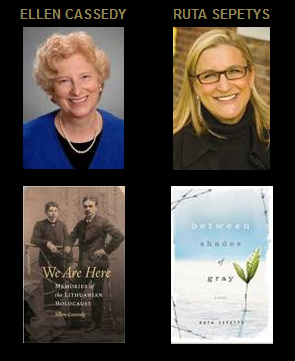
Join Ellen Cassedy, author of We Are Here: Memories of the Lithuanian Holocaust, and Ruta Sepetys, author of Between Shades of Gray, her best-selling novel about the Siberian deportations, as they share – and compare – their journeys into Lithuania’s dark years, and offer hope for the future.
BALZEKAS MUSEUM OF LITHUANIAN CULTURE
6500 S. PULASKI ROAD CHICAGO, IL 60629
TEL.: 773.582.6500
FAX: 773.582.5133
Open 10 AM - 4 PM daily
- Bookmark :
- Digg
- del.icio.us
- Stumbleupon
- Redit it
This is the story of Vanda and her family. A story similar to what happened to many families that were affected by World War II's terrible events on Lithuanian soil, a story about innocent children who wanted a normal childhood in their beloved homeland, but instead were hit hard by the horrors of war and the terrible atrocities committed by the Hitler and Stalin regimes. Vanda and her parents managed to escape before Stalin's Red Army laid its iron grip over Lithuania in 1944. They came to Germany and later to the United States. Vanda's aunt had no such luck; she was deported to Siberia and starved to death because she shared her food rations with other deportees.

Vanda with her husband, Vytautas Sliupas, in June 2010.
They live in California.
Photo: Aage Myhre
By Vanda Fabijonaviciute Sliupas
My family lived in northern Lithuania but not close to Kaunas where my uncle Ipolitas’ residence was, nor Siaulenai where my aunt Benyte lived with Vytukas and Reniukas and uncle Adolfas Petrauskas.
Adolfas Petrauskas was the principal of a primary school and aunt Benyte was a teacher. The Fabijonas family did not approve of my mother because she did not have any education. According to them my father Juozas married below his social level. Even though my mother took in sewing and knitting to supplement a policeman’s salary to cover the cost of our living and to pay for a part of the costs to educate uncle Ipolitas and aunt Liuda. Our paternal grandmother, two aunts and uncle Ipolitas ignored us completely.
Then in 1938 Ipolitas’ wife committed suicide. We were invited to come to the funeral in Kaunas and this was the first time we met Vytukas, age 8 and Reniukas age 5. The adults were busy with the funeral arrangements and discussions of the tragedy, the four cousins played games and talked. My brother Romas, Vytukas and Reniukas formed a group. I was mostly by myself or talked to the housekeeper or anyone who was willing to spend some time with me. Until I got used to it, Vytukas looked sickly because of his small frame, red hair and very white complexion. The fifth cousin, orphaned Algiukas was not quite two years old and spent the time with grandmother. I remember being at the photographer’s and once walking in Kaunas on “Laisves Aleja” and eating the first sausage and a bun (something like a hotdog) on the street – which to me was a big treat.

1938: I remember being at the photographer’s and once walking in Kaunas on “Laisves Aleja” and eating
the first sausage and a bun (something like a hotdog) on the street – which to me was a big treat.
The next summer we were invited to join the families by a lake (can’t remember the name, but it was between Siaulenai and Siauliai). The four women stayed close to the house doing the chores and looking after Algiukas, but the four cousins (now even I was included) explored the lake, which formed a chain of seven lakes, and the forests around them. Those two weeks welded us together into a close unit and we loved being together and keeping our secrets to ourselves. From morning till night we played all kinds of games, ate our little lunches, slept on the moss under the ancient trees, fished when we felt like, swam and nobody told us to come home or even looked for us. But the time flew and we all went back to our homes after two weeks.
In June of 1940, Russia decided to occupy Lithuania –
our leaders fled to Western Europe or America
On the 3rd of September, 1939, the World War II started when Russia and Germany agreed to divide Poland between themselves. Then in June of 1940, Russia decided to occupy Lithuania, Latvia, and Estonia to “protect us from ourselves”. Our leaders fled to Western Europe or America. Military and Police officers who stayed were imprisoned; some were shot immediately, others were deported to Siberia. Since my father worked in the Lithuanian police force, as soon as Russians came, he went into hiding. Mother took us to live with our maternal grandmother (baba) and her son uncle Vladas. The children were permitted to go to schools, but now had to learn Russian. At the beginning there was enough food and the common people who worked as manual laborers were exalted, but the educated or those who had some wealth were ridiculed and had to do heavy physical labor to prove they were just like any other person. To survive one had to have a food ration card. Very soon the stores emptied, especially in dry goods. Food still could be traded with farmers and everybody cultivated home gardens just to have something to put in the family’s dinner pot.
Since father was in hiding, the Communists tried to provoke us so they could put mother, Romas and me in prison, hoping that father would then give himself up. Several nights during that year, somebody tried to raise the Lithuanian flag on our roof to intimidate mother and uncle Vladas. But as soon as we heard them climbing the ladder, uncle Vladas would run outside and take the flag down.

June 1940: Russia invades Lithuania.
On June 14th, 1941, the deportation of 36,000 people began –
my aunt Benyte was deported to Siberia and starved to death
On June 14th, 1941, the deportation of 36,000 people began. The Soviets were not very selective during the first round of deportations; they came to the door, knocked, told the people they had 15 min. to pack and drove the families to the railroad station, loaded 60 or more of them into each cattle car with one bucket to serve as toilet. The NKVD (Soviet secret police) did not tell them why they were being deported, where they were taking them, for how long or how far. NKVD came to baba’s (my maternal grandmother) flat, searched for our family and for uncle Vladas, but could not find anybody and did not take baba either.
In Siaulenai it was the same procedure. They came to the school where the Petrauskas’ family lived. They found only aunt Benyte and cousin Renius/Renualdas (age about 8 yrs). Told her to pack and took them to the railroad station. Short time later uncle Adolfas Petrauskas came home and his neighbors told him that his wife and the younger son were arrested and taken to the railroad station to be deported. He ran to the station, but the soldiers would not let him search for his wife. He begged, he cried, he bribed them to be let on the platform in order to search for his wife and son. The soldiers thought he was out of his mind wanting to be deported, but he would not stop. Finally the soldiers let him go on the platform to search the cattle cars for his wife and son. As soon as he found them, he was pushed to another cattle car full of men, destined to Siberian forests, as a logger and he never saw his wife again.
After weeks of traveling Benyte reached her destination (I do not know the name of the location) deep in the Siberian wilderness and was assigned to work in food distribution. After couple years, around 1944, she was thrown into prison because she gave larger portions of bread to men who worked in the forest. In her cell she was deprived of food and starved to death; she was buried in the local cemetery.
In the 1950’s or ‘60’s the Russian government allowed families to bring the remains back to Lithuania and her mother-in-law made a trip to Siberia and brought her remains to Siauliai and reburied them in a cemetery lot. (Regina Petrauskas or the sons of Renualdas would know about the details of location or the year when each of the family members died.) After Renius’ mother died, Renius wrote to his paternal grandmother and eventually she traveled to Siberia and brought him back to Lithuania. After Stalin died in 1953, grandfather, Adolfas Petrauskas also was allowed to go to Lithuania and he is buried next to his beloved wife Benyte.

Lithuanians deported to Trofimovsk in the region of the Laptev Sea, Siberia, an area with permafrost
north of the Polar Circle. The photo is from 1949. These deportations started in 1941.
In 1942-43, a third of the deported people died, mainly children and elderly people.
Photo: The Museum of Genocide Victims, Vilnius, Lithuania.
Childhood in Russian and German occupied Lithuania 1940-1944
Now we come to my cousin Vytas/Vytautas Petrauskas. As I mentioned before, ever since childhood he always looked sickly. I do not think that he had TB, but his parents always were on the alert. At the time of their deportations Vytas was in Kaunas Sanatorium for lung diseases. As soon as uncle Ipolitas heard about what happened at the railroad station, he rushed to the hospital and brought Vytas from the sanatorium to his house.
After almost a year in hiding, mother received a message from my father that we immediately should take a train to Kaunas where uncle Ipolitas lived. I do not know who brought the message to mother, but mother packed small bundles of clothing and we three went to the railroad station. Luckily the night train was empty and no one checked our identities. We all knew that Germans were concentrating their forces on our borders to overrun us on their way to Russia and this was the only hope for us to survive.
When we reached Kaunas, mother, Vytas, Romas, and I were sent to a small village, about 30 km from Kaunas, where aunt Liuda was teaching primary school. This being summer holidays, the schoolrooms were empty. A helper brought in a lot of fresh cut grasses, some sheets, pillows and we had a nest to sleep in for the next four or five weeks. All of us slept in this one room, except aunt Liuda, grandmother Ona and orphaned Algiukas who already was 5 years old.
Now there were only the three of us to roam the surrounding fields. The soil was soft, white sand and the men dug out a shelter for us in case the war moved to this area. The floors we the children lined with ferns, the men put crossbars of saplings to form a roof and we had to pluck more ferns to cover our shelter. Luckily we did not have to use it as a shelter, but it made an excellent place for us to play in. I remember there still were wild strawberries hidden among the ferns and we managed to eat them to the last. The memory that stays with me is the suffocating aroma of the crushed fern fronds, but after a day or two we got used to it.
Then on the night of June 22nd, 1941, the war came to our area. We were close to the main highway to Kaunas and we were awakened by the sound of rolling military stock. There was no resistance by the Russians whatsoever, as if they never were there at all. The invasion came too late for the people who were being deported, the loaded cattle cars had enough time to be on their way to Siberia and the eastern coast of the Pacific Ocean. The women deportees were sent to the frozen fishing industry of the far Northeast, and the men were directed to the logging fields. The deportations continued from 1945 until 1953 and during that time 600,000 Lithuanians, Latvians, and Estonians were uprooted and moved to work in the frozen East.
The German army came, young men in clean uniforms were marching
to save us and we were willing to give them the best of what we had

June 1941: German Wehrmacht soldiers arrive in Lithuania, throwing the Russians out.
The morning of the 23rd June the German army came marching down the highway. And what a sight it was: young men in clean uniforms were marching to save us and we were willing to give them the best of what we had. Farmers gave them hams and rounds of cheese, housewives brought their cherry wine bottles, girls decorated them with flowers and kisses and the children marched alongside of them through the villages. You might say the Germans were occupying us just as the Russians did! That is true, but for the time being they saved thousands of people from being deported to Siberia. The Germans considered us Aryans and of the same blood as themselves. We hoped that we would be at least semi- independent. Also, as history proved, Stalin killed over 30,000,000 of his own people not counting the millions during the battles of war, whereas Hitler killed 10,000,000, mostly Jews, Gypsies, Poles and other Slavs. We were very small nations and could not fight either Russians or Germans; the only hope to survive was with the lesser evil. The euphoria lasted only three months until Lithuanians refused to execute the Lithuanian Jews and to join the German Army units or the SS battalions. Many young men had to go into hiding again or had to leave Lithuania for Sweden across the perilous Baltic Sea. Lithuania is the only country in the German occupied territories that never formed any SS units.
Otherwise life continued under a new occupation, except that food became very scarce and it was very dangerous to engage in any anti-German activities. German Gestapo terrorized the people whom they suspected. Political prisoners were usually sent to Dachau or Buchenwald concentration camps where about 300 Lithuanians were killed in one of them. Young men, who refused to serve in their armies, when caught, were sent to work in German military facilities which were regularly bombed by English and American planes, or to man the anti-aircraft batteries.
Vytas spent the winters with his paternal grandparents Petrauskas in Siauliai where he attended high school. As soon as summer vacations began, he would come to stay with us in Mazeikiai. The next three summers we spent roaming the surrounding areas, fishing in the river Venta and generally sticking our noses where they were not wanted. Nobody told us to stay home. Father had his office in one part of the house and he did not want to have us underfoot. Mother was busy with her usual money making extra work even though we did have a 20-something year local Russian girl helping in the house. The three of us slept in a very small room where two iron beds barely fit in it – boys slept in one bed and I in the other. Half the yard was fenced off and we all had pets there. I think Romas had a goose that followed him, Vytas had a rooster who ate from his mouth and I had a cat. If during our adventures we found an injured bird or a small animal, we always brought them home and tried to cure them, but did not have much success. We did not do anything spectacular, but Vytas came to us gladly and we all enjoyed each others’ company. I always considered to have had two brothers and when I had to explain myself, I used to get confused.

Emerging from an agricultural village, old Mazeikiai was mostly characterized by small wooden houses and shacks, surrounded by gardens where vegetables were grown, and livestock was held, mostly for private consumption. Water supply was from local wells, operated by hand pumps. Most streets were unpaved, and wooden sidewalks were used during winter periods in order to avoid walking in the mud and slush.
The summer of 1944 Vytas came as usual. The Russians, who were provided with arms and food by the Land Lease program of the USA, the Western front being opened and fought by the Americans and the Brits, were winning the war in the East and were on the move towards the Baltics. I remember Romas’ birthday (6-11) when father gave him a little gun. Vytas and Romas were so excited and were playing with it, fully loaded, when it went off and shot Romas through his left palm. For two days we said nothing either to mother or baba. The hand was swollen, but he still chopped the wood for the cooking stove and refused to face mama. But I became afraid and went to baba to tell her what happened. Baba came and scolded her daughter for not looking after us. Mama rushed Romas to the doctor who extracted the bullet and she told father not to scold him too much. The doctor gave some yellow powder (sulfur) and told Romas to put some on the wound every day to keep the infection in check.
Then the front moved closer and the adults panicked. Father and his assistant Mr. T. received a truck from the police department and with help of my uncle Vladas and both boys, packed most of our things in it, then drove to pick the assistant’s things.
In June of 1944 we left Mazeikiai towards the border with Germany
The morning of the 18th of June we left Mazeikiai towards the border with Germany – under no condition would one stay to face the Russians and a certain death. There were seven of us and I can’t remember how we all managed to fit in. The two men sat up front and the five of us lolled in the back of the truck holding onto the side belts. The German border was not that far from us and by the afternoon we stopped at a relative’s farm about 30 miles from the border, around Kretinga, but farther from the Baltic Sea. They were an elderly couple and very pleasant to us. After supper, the adults stayed inside the house discussing serious matters and the three of us were sent to the barn to sleep in the hay. Father and his assistant returned the next day to work in Mazeikiai, but we stayed at the farm for about six weeks.
The Eastern front was standing still and no new rumors circulated among the farmers. Since we might have to leave at any moment, we were restricted to stay at the farm. We played card games, often Vytas was sketching in his notebook, I read books found at the farm and Romas helped the farmer to fix some farm equipment. For us it was boring. The farmer had two horses, but we were permitted to ride them only in the yard. The first time Vytas rode, he almost killed himself. The yard was full of obstacles and lines stretched between trees and buildings for laundry and electrical connections. As he slowly rode, he hit one of the stretched wires under his chin and just hung there. The farmer came running, backed the horse and helped Vytas to climb down – for some time there was a mark where the wire hit his throat. Then a rumor came that our high school was moved to Ylakiai and was going to start the first week of September. Father came and took us to Ylakiai to another relative farmer. Father returned to Mazeikiai with the truck to his duties and to bring baba with him on his return. Since his assistant was wounded during an air raid by a fragment of a bomb in his hand, he did not have to go back to work. They stayed at a nearby farm. We had no clothes, because everything was in the truck and the truck went with father. The boys ran around in short pants but I had a light coat. Mother managed to get some fabric from the farmer and made long pants for Vytas and Romas. She bought a pig and salted for the winter and smoked some geese that the farmer sold. Everyone knew that when the Russian come, nothing will belong to farmers any longer and will be taken away from them. We waited for more than a month, but the high school never opened.

1944: German troops disembark in Lithuania.
Bombardments and shootings came from all sides, mother was panicking
On October 6th all hell broke loose: the front was not only moving, but running towards us. Bombardments and shootings came from all sides, mother was panicking, we could not get in touch with our father or grandmother – baba. It started getting dark and we did not know what to do. Mother told us each to pack our briefcases with items we wanted to take with us: Vytas took his sketches, Romas – stamps and I some knitting samples. After 23:00 hrs at night, father rushed in on a motorcycle without the truck and without our beloved baba – the German military police would not let him take the truck and baba was too old to ride on the motorcycle. He had stopped at his assistant’s place, they already had a wagon and a horse, so now father negotiated with the farmer and managed to get us a wagon with a horse. He just jumped, threw the one suitcase he had left with us into the wagon, then some preserved meats that mother had prepared, some flour, bread and we were off. The roads were full of refugees and Germans fleeing in cars and trucks, so we started straight across the fields and ditches. The bombardment went all around us. Fires were raging everywhere. Mother and the boys were running along the wagon, only father and I sat in it. The poor horse could not pull the wagon fast enough and out went the flour sack, then one barrel with the pork, then the other with smoked geese We were left just with one suitcase and a loaf of bread. After several hours we came to a major road that was not too badly congested.
Now all five of us climbed into the wagon. It was still dark, but all around the horizon fires were burning as villages and cities were disappearing from the face of the earth.
Just before dawn we passed Kretinga and the only thing we saw were flames leaping, jumping and rolling in huge rolling balls as the falling bombs ignited the wooden houses and the railroad yards. We continued towards Silute and by now there were three or four rows of wagons squeezing on the road. Suddenly couple platoons of Ukrainian Cossacks, serving in the German Army, in their bright uniforms on magnificent horses tried to cross our crowded road but could not breach it. They turned back to the fields and disappeared among the trees.
Suddenly, mother was gone. We started screaming and calling her name, but nobody answered.
Father gave the rains to Vytas and told him just to follow the other wagons in front of us. In front loomed the narrow Silute bridge that could accommodate only a single line of wagons. Father was gone for a minute or so, but could not find mother. Then, about 10 min. later, mother was back with us – she was separated from the wagon by people pushing and shoving each other to be across the Silute bridge soonest. We were a fifth or sixth wagon away from the bridge when suddenly the bridge with wagons and people on it exploded, bodies and concrete danced in the air for a minute or two, then slowly sank to the bottom of the ravine. The Russians were right on our heels and the Germans themselves blew up the bridge to prevent Russian tanks from crossing. Panic; people did not know what to do. Father and his assistant turned the horses and wagons around and we took a small road leading towards Kintai, Ventes Ragas and Kursiu Mares (Curonian Lagoon). Small groves of pines grew all around us. There were very many German soldiers who were encircled and trapped by their enemy with no escape.

1944: Soviet soldiers in carts, on their way westward, passing corpses of dead German soldiers.
Father’s assistant grew up in these environs and he spoke perfect German and knew the surroundings. We stopped at the staff tent and he started talking to the officer in charge. The officer said if there was any way to leave, he would evacuate his men, but there was not a chance. But he saw the exhausted children; I guess he must have had children himself. He said there was a small launch coming in the morning for the wounded soldiers and would sail as soon as the wounded were loaded, but he could not help us. Then father and the assistant said they both had revolvers, couple hundred rounds of bullets and would be willing to give them to him. He looked at the bullets, looked at us and asked for the horses also. Father gave him the revolvers and the bullets on his word that tomorrow morning he would give us a slip of paper to be admitted on the launch. They shook hands and we started looking for a farm where we could spend the night. The Germans were running short on ammunition for their last stand.
The first farm we came to was a well-run farm with apparently a good mistress, because everything was arranged as if they just left for church. Not even a cup was out of place and the beds were made. But the owners had fled. Vytas and Romas caught a goose, we all plucked its feathers, cooked it and ate it. We were starving. Father went to talk to his assistant while we dragged bedding from the house to a bomb crater. Soon father returned and we slept on the inside of the crater. Our parents and I woke up in the middle of the night when we heard footsteps on the gravel. Two Russian soldiers stood there looking at the five of us. The one sighed and said “let’s shoot them”, then the other replied “it’s just a family; let them sleep”. I did not speak Russian, but when they were gone, mother translated their conversation to us.
Early the next morning we drove back to the staff camp, the officer gave us a slip of paper and told where to leave the horses. We drove to the Ventes Ragas, the evacuation launch was already loaded, the boys carried our large suitcases and the seven of us sat on the floor among the wounded and dying solders wishing to escape the Russian entrapment and to make a new life in a strange country. The launch took us to Labiau (Labguva), East Prussia, and delivered us to a waiting Red Cross and some food. One has to admire how well organized the Germans were even at time of defeat. The first thing they made us do was take a communal bath, soak our hair in kerosene and scrape all the seams of our clothing with the same liquid to get rid of lice. But since we did not have another change of clothing we had to wear the same stinking garments. Then they put us on a train to Koenigsberg (Karaliaucius), (a city belonging to Lithuanian ancestors and given to Stalin during Yalta conference for 50 years, but even now it remains as a part in the Russian control). Then on another train to Dresden.

Father could not believe that the Germans would lose the war
Father and the assistant could not believe that the Germans would lose the war – they believed in secret weapons being developed (there were all kinds of rumors floating around giving hope to the refugees.) Therefore, father wanted to stay as close to Lithuanian border as possible. In Dresden we were advised by the Lithuanian Committee for Refugees to move to a small town to escape the nightly bombings. Mother and Mrs. Ona stayed in the railroad station to guard our belongings and the three of us were told to go and explore the city and come back in four hours. We were not enchanted with the environs around the railroad station. We visited a church with soaring towers and stared at the beautiful things displayed in the shop windows. Since we had no money to buy even a sweet bun, it became boring and we returned to mother. When the men came back, we had some bread and all slept on benches or on the floor, wherever we could find a free spot to lie down.
In the morning we climbed on the train for Grunwald, in Lower Silesia. There we ended up in a former restaurant that had one huge room and two toilets. When all the beds were assigned, there slept 60 people. Each had an iron bed with a thin mattress, sheet, pillow and a blanket. The adults were sent out to work in the city: mother became a nurse’s aide, Romas worked at a butcher shop (during the day one could go there and get a cup of very rich broth, but had to bring own bread), father and his assistant were assigned to the cemetery to grave digging, but Vytas and I stayed home and took care of our belongings. Mother received her meals at the hospital, Romas ate at work to his fill and he grew up very fast during those few months, but Vytas’s, father’s and my suppers depended on us. I think the landlady used to give us raw potatoes to fix for dinner. We could buy some bread, margarine and sometime marmalade on ration coupons and we still had some bacon in the large suitcase. The adults were paid small wages, but father saved most of it for tickets in case we had to move again; the Red Cross would not pay for our travel any more. The landlady had an old bicycle and gave it to Romas for his use.


1945: U.S Army arrives in Germany. Photo from 28 February 1945 near Frauwullesheim, Germany, after the First Infantry Division crossed the Roer River. It shows soldiers and vehicles on a rural road. The unit is identified as Company C, 1st Battalion, 18th Infantry Regiment, 1st Infantry Division, 1st U.S. Army.
Vytas and I practically lived on potatoes and pieces of bacon
As soon as we made beds and swept around them, we used to go to the surrounding forests and search for mushrooms so we could make them for father. Vytas and I practically lived on potatoes and pieces of bacon. Romas could not bring anything from the butcher shop because strict rules forbade him to take anything home. On weekends mother did the laundry and I had to darn everybody’s socks. There was a potbelly stove in our corner that helped to dry the heavy woolen socks father wore in his outside work. We spent two months in Grunwald, but the Russian front kept on moving closer to us day by day. As soon as father had saved enough money for tickets, he asked for permission to go to Dresden again to hear what the Lithuanian Committee for Refugees would advise us. This was right after Christmas 1944.
When we reached Dresden the city looked shabby in late December, cold with a strong wind from the Elbe River. This time we did not even want to go out of the station to look at the store windows and we stayed with mother and Mrs. Ona. Father and his assistant went to the Committee and were advised to go to Gotha, Thuringia, in central Germany. The trains were running full: going west with the wounded soldiers, and going east with the last of the German fighting men – boys from 17 yrs on, and men over 50 going east to fight the Russians. We could not get on any train with a suitcase and Romas' bicycle. We decided to leave them behind. The railroad supervisor issued a storage voucher to father. We covered our belongings with a tarpaulin in the corner of a platform and said goodbye to our bacon.
Arriving in the German town Gotha on New Year’s eve 1944-45
The trip westward took several days before we reached Gotha on the New Year’s eve 1944-45. The rails were being bombed almost every night and trains traveling east had priority, the westbound trains were continuously shunted to let them pass. We went to a small hotel and the men started looking for work. The city was already crowded with refugees and none of the adults could get a job of any kind. Without a job no one was willing to rent us a place to live and government would not issue ration coupons for food. And money was running out to pay for the hotel. Bombing alerts used to sound very often and we had to go to a shelter built in the side of a small hill in the middle of the city. It was very cold, and Vytas once fainted from hunger and I used to faint regularly. Finally, father and his assistant, who by now had become a good traveling companion and a friend, found jobs in a greenhouse outside the city and living facilities in two separate attics. We lived the month of January on ration cards and starved since we had no other source of food especially fat. Mother and we the three children became skeletons.
Most of our food had to go to father so he could do heavy manual work in the greenhouse. The German people had their gardens and were allowed to have rabbits. After a month of starvation, father decided to go back to Dresden and bring to us the suitcase with the bacon. He decided to take Romas with him and they left on the 12th of February. On the 14th of February we heard that Dresden was heavily bombed with incendiary bombs, was burning and completely destroyed. We did not know where father and Romas were, nor if they were still alive. Tears and despair filled our little rooms in the attics. There was nothing we could do, but pray and wait.

Gotha, Germany, where Vanda arrived with her family on New Year’s Eve 1944-45, became the first headquarters of the American Army in Germany, set up by General Dwight D. Eisenhower in April 1945, also as a Prisoner of War camp for captured German soldiers.
Only then they discovered that there was no more Dresden
When Father and Romas took the train east, it took them four days to reach the vicinity of Dresden. Only then they discovered that there was no more Dresden. The train stopped short of Dresden and everybody had to get off the train in a small suburban station. After traveling so long, father decided not to give up, but hike to Dresden and see if the railroad station was still standing.
Many people with bundled possessions were leaving the city to become refugees themselves. Father and Romas continued to walk for several hours through the destroyed, smoldering city, where the asphalt was still burning in places, corpses laying everywhere and the smell of burning flesh still filling the air. Finally they reached the railroad station. Its main building was completely destroyed: no roof, nor walls, but there were people around clearing the carnage and the debris of broken masonry and dead bodies. Father approached a station watchman and showed him the receipt for our luggage. The astonished man looked at our father and asked him if he could not see the destruction everywhere? But he looked at the receipt again and told father that his things were stored on platform #6. Father and Romas found the right platform and saw it held several tarpaulin covered mounds which were surrounded by debris and broken bricks. When they cleared the debris and lifted the tarpaulin they saw that their suitcase (which is still with us in USA as a souvenir) with the bacon was completely untouched and Romas’ bicycle was still there!
They loaded the heavy suitcase on the bicycle and started back to the suburban station: one pulling, the other pushing. Within three miles (5 km.) the bicycle collapsed and they started dragging the suitcase by the handle. But a good-hearted German with a wheelbarrow came along and offered help. Together they pushed the wheelbarrow with the suitcase to the suburban station the last 6 miles (10 km.). There were few passengers and no wounded soldiers going west, so father and Romas were able to take the suitcase with them on the train. Three days later they showed up at our rooms with the bacon and both of them uninjured and healthy. We really celebrated! The 45-day starvation in our family had ended and we managed to survive.
There was not much for us to do in Gotha. There were many more Lithuanians in the city; we used to have Sunday school and group meetings quite often, but made no friends – we lived too far from Gotha’s center. Like before, we played among the three of us.

U.S. General Eisenhower meeting with generals Patton, Bradley, and Hodges on an airfield somewhere in Germany during impromptu conference with supreme commander, March 1945.
Sad since our hopes of Americans turning against the Russians and beating them evaporated
On May 8th the World War II ended with German unconditional surrender and the American Army came to Thuringia. We rejoiced, but also were sad since our hopes of Americans turning against the Russians and beating them evaporated. What happened to all the promises made by President Roosevelt? Not only that, the USA and Britain agreed to Stalin’s demands and gave the three Baltic countries to the Russians!
We had no place to go, no place to call our own. But life went on under US Army control. There was a huge German depot close to us and the Americans opened the gates for everybody to take what they liked. On my way to the depot I saw my one and only execution – an American soldier shooting a civilian. At the depot there were not many things worth taking except a huge hill of green beans, which to the knowledgeable were un-roasted coffee beans, but no one knew that or took them. There were some plastic boxes. Father looked in the drawers of an office desk and found hundreds of food coupon books. Now we ate well, but had to stand in lines daily to purchase meat, sausages, sugar, flour or jams in every store. In each place we could use only five coupon books because we had to show our living permits also. But still it helped to fill our bellies.
One time we three found an unexploded canon shell about 16” long. Vytas and Romas decided to open it so they could have the cylinder. They started slowly knocking it on a stone and turning. I was scared since I had heard other boys being blown up doing such thing. But they would not desist and luckily succeeded to remove the explosive point. They took the cylinder home and father almost skinned them for being stupid. They collected a lot of shells of different guns, but never touched a big one again.
It was announced on the radio that in two weeks Thuringia would be given to the Russians. We had to prepare to run again. The landlady sold father a wheelbarrow and gave an old bicycle for the children to ride. In the end of May we started on foot south toward Bamberg, then west to Hanau near Frankfurt-am-Main in the Hessen province – a distance of over 150 miles (240 km). It was almost summer; the weather was nice and warm. The suitcase and blankets went into the wheelbarrow but water for drinking we carried along. Father and the boys pushed the wheelbarrow, taking turns every hour. The road through the mountains zigzagged all the time, but did not climb up, it was not hard, but a long and tiresome trip. Mostly I rode the bicycle, but often Vytas or Romas took over. The views were panoramic, majestic with small villages, churches dotting distant landscapes. A river ran along the road, but the water was very cold. When we passed a village, we bought bread, sausages and milk for each meal – were very grateful in having those coupon books. At the end of the day we usually washed in the river; nights we slept in the open each rolled in a blanket.
The first big city we passed was Wurzburg – from a distance it looked like a castle. It stood on top of a mountain surrounded by an ancient wall. We did not stop there since the Refugee Committee had told father that the Lithuanian high school will be opening in Hanau. We continued on our way. We descended from the Thuringia Mountains and now passed many towns, but almost all were partially destroyed by the war. It took us about 10 days to reach Hanau. The Displaced Persons camp, located outside the city, was in a former army barracks. After registering there we were assigned living quarters, ours happened to be on the fourth floor of a half destroyed building – the corridor was blocked and we could not go exploring in the ruins. There already were seven people living in the room and we added seven more. We received blankets, pillows and sheets, but beds the men had to build from scrap boards. First, the room was divided into half, each family isolated a place for themselves. Father and mother had one bed, Vytas and Romas another bed and a short bed for me. Then we were given straw mattresses. On our side was a belly stove for warmth and cooking. The toilets were on the other side of the corridor facing our door and it served as a laundry, bathroom and toilet. One learned not to be bashful because we had no privacy.
Vytas and Romas were assigned to the 4th Class, and I to the 2nd, of a Lithuanian Gymnasium (High school). Father worked as a truck mechanic, mother went to a sewing school. Food was provided 3 times daily. Now we had other interests and friends and the only time we spent together was in the evening, when the lights were out. Then all kinds of jokes, laughter and anecdotes floated in the room. We all joined the Lithuanian Scouts. Actually, I felt senior over the boys, because I was enrolled in Girl Guides in Lithuania at the age of six.
Then we received immigration papers and came to Chicago in April 1949
Vytas lived for two years with us in that room, then in 1947 he was permitted to immigrate to Chicago as an orphan and lived with uncle Purtokas’ family. There he reestablished the Lithuanian Eagle Scouts (Skautai Vyciai), was very active in meetings and camps.
Then we received immigration papers and came to Chicago in April 1949. In a week father and mother found work and rented a two-bedroom apartment in Town of Lake and Vytas came to live with us again. We had missed each other very much, so we could not stop talking, joking and laughing and fighting for the next two months. After College classes he worked at the Campbell Soup Co. Cannot remember where Romas worked. I worked at Goldenrod Ice Cream Co. and after work made dinners for the family, since mother used to come home very late. The money we made was for our education; the parents did not charge us for room, board and clothing. Vytas attended Wilson City College for 2 years, then moved to the University of Illinois in Urbana IL where he received his Architects Degree and started his own life.

Chicago became Vanda’s new home in 1949. Here a photo from the Grand and Harlem
intersection, appears to be Christmas Season.
From NW Chicago history site.
- Bookmark :
- Digg
- del.icio.us
- Stumbleupon
- Redit it
- Posted by - (0) Comment
FACT BOX
WWII & POSTWAR LITHUANIA

WWII: Occupied by Russia in 1940, Germany in 1941 and Russia in 1944
In June 1940, the Soviet Union occupied and annexed Lithuania in accordance to the secret protocols of Molotov–Ribbentrop Pact.
200,000 Jews murdered during Lithuanian Holocaust, 1941-1944
A year later the Soviet Union was attacked by Nazi Germany, leading to the Nazi occupation of Lithuania. The Nazis and their collaborators murdered around 200,000 Jews of Lithuania (more than 90% of the pre-war Jewish community) during the Holocaust.
300,000 deported to Siberia, 1940-1953
After the retreat of the German armed forces, the Soviets re-established the annexation of Lithuania in 1944. It followed with massive deportations of around 300,000 citizens to Siberia, complete nationalisation and collectivisation and general sovietisation of everyday life.
Tens of thousands Lithuanians fled to the West, 1940-1944
During World War II many fled west to escape the Russian reoccupation of Lithuania. Eventually 30,000 Dipukai (war refugees or displaced persons) settled in the United States, primarily in cities in the East and the Midwest. These immigrants included many trained and educated leaders and professionals who hoped to return someday to Lithuania. The heightening of tensions between the United States and the Soviet Union—known as the Cold War—dampened these expectations, and many Lithuanians sought to create a semi-permanent life in the United States.
By 1990 the U.S. Bureau of the Census listed 811,865 Americans claiming "Lithuanian" as a first or second ancestry.
Europe’s longest and bloodiest guerrilla war in modern times, 1944-1953
From 1944 to 1953 approximately 100,000 Lithuanian partisans fought a guerrilla war against the Soviet system. An estimated 30,000 partisans and their supporters were killed, and many more were arrested and deported to Siberian gulags. Around 70,000 Soviet soldiers were killed by the partisans.
It is estimated that Lithuania lost almost one million people during and after World War II, one third of its population.
Regained freedom and independence, 1990-1991
The advent of perestroika and glasnost in the late 1980s allowed the establishment of Sąjūdis, an anti-communist independence movement. After a landslide victory in elections to the Supreme Soviet, members of Sąjūdis proclaimed Lithuania's independence on 11 March 1990, becoming the first Soviet republic to do so. The Soviet Union attempted to suppress the secession by imposing an economic blockade. Soviet troops killed 14 Lithuanian civilians on the night of 13 January 1991.
Worldwide recognition of independence and member of the UN, 1991
After the Moscow Coup in August 1991, independent Lithuania received wide official recognition and joined the United Nations on 17 September 1991. The last Soviet troops left Lithuania on 31 August 1993 – even earlier than they departed from East Germany.
Member of EU and NATO, 2004
Lithuania, seeking closer ties with the West, applied for NATO membership in 1994. After a transition from a planned economy to a free market one, Lithuania became a full member of NATO and the European Union in the spring of 2004 and a member of the Schengen Agreement on 21 December 2007.
- Bookmark :
- Digg
- del.icio.us
- Stumbleupon
- Redit it
- Posted by - (3) Comment

LITHUANIAN SSR
COAT OF ARMS
Returning ‘home’ to
Lithuania from Siberia

The Last Summer. Zarasai 1968.
PHOTO: ANTANAS SUTKUS.
It must have been quite a shock for the deportees to return ‘home’ from Siberia to Lithuania in the 1950s and 1960s. The country they had loved and cared so much about was now ruled, mismanaged, by Moscow-believing Communists.
Since 1941 more than 300.000 persons had been deported to Siberia, with tens of thousands dying en route to or on the permafrost. Tens of thousands of the country's leading women and men had fled to America and other nations in the west.
The 1950s was the decade when Lithuania's 10-year guerrilla war against the superior Soviet forces had finally come to an end, with the result that 22.000 Lithuanian forest brothers and about 70.000 Soviet soldiers had lost their lives, thus the longest and bloodiest guerrilla war of modern Europe.
Lithuanian daily life during the 1950s and 1960s was characterized by terrifying KGB activities, denunciations, imprisonments and executions without trial, widespread corruption and mismanagement in which most of the good, democratic principles many fine people had fought so hard for during the interwar period were totally forgotten and disregarded.
People felt despair, discouragement, fear ... But also a vain hope - that Western countries would come to liberate their dear homeland from the Soviet tyranny...

Village Street, Dzūkija 1969
To see more Antanas Sutkus photos, go to:
http://www.ananasamiami.com/2011/04/photography-by-antanas-sutkus.html
The collectivization of Lithuanian agriculture (1940 -1952)
Until World War II Lithuania was an agricultural country. The sovietization of Lithuania introduced great changes in the economic structure of the country, as well as in agriculture. From the commencement of sovietization, the soviet regime sought to industrialize the country. Nevertheless, despite notable progress in industrialization, agriculture is still of principal importance in the economy of the country.
Until the soviet take-over in 1940, Lithuania was a land of small and medium farmers; 90.2% of all farms had land areas ranging from 2.5 to 75 acres and cultivated 66.2% of all arable land.
The next five photos are from: http://www.retronaut.co/2010/05/soviet-lithuania-1960s-1970s/



|
The same applies for the 13 years he lived after he had come back to Lithuania, a period when the once proud president was subjected to increasingly humiliating abuse from the Lithuanian SSR. Stulginskis passed away in Kaunas in 1969, after having experienced nearly 30 years of humiliating and unjust assaults in Siberia and in his once proud homeland Lithuania. It is now soon 94 years since Stulginskis, together with the other brave leaders of those days, signed Lithuania's declaration of independence, on the 16th of February 1918. President Aleksandras Stulginskis should not be forgotten.
|
- Bookmark :
- Digg
- del.icio.us
- Stumbleupon
- Redit it
- Posted by - (7) Comment
Cultivating Lithuanian unity world-wide:
What YOU can do!
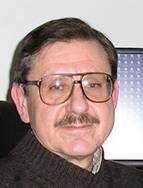
Boris Vytautas Bakunas
By Dr. Boris Vytautas Bakunas, Ph. D., Chicago
A wave of unity swept the international Lithuanian community on March 11th as Lithuanians celebrated the 22nd anniversary of the Lithuanian Parliament’s declaration of independence from the Soviet Union. However, the sense of national unity engendered by the celebration could be short-lived.
Human beings have a strong tendency to overgeneralize and succumb to stereotypical us-them distinctions that can shatter even the strongest bonds. We need only search the internet to find examples of divisive thinking at work:
”50 years of Soviet rule has ruined an entire generation of Lithuanian.”
”Those who fled Lithuania during World II were cowards -- and now they come back, flaunt their wealth, and tell us ‘true Lithuanians’ how to live.”
”Lithuanians who work abroad have abandoned their homeland and should be deprived of their Lithuanian citizenship.”
Could such stereotypical, emotionally-charged accusations be one of the main reasons why relations between Lithuania’s diaspora groups and their countrymen back home have become strained?
As psychiatrist Dr, Aaron T. Beck and others have noted, accusatory remarks are often perceived as threats by those targeted for verbal attack. Recriminations follow and escalate into verbal shooting matches that solidify hostilities between individuals and groups that previously enjoyed friendly relations.
Although debate is an inevitable and even desirable characteristic of free democratic societies, inflammatory finger-pointing can undermine a country’s national cohesion, political stability, and economic development. As individuals, what can we do to curb the spiral of anger-promoting speech that has surfaced within the world-wide Lithuanian community?
Learn and Teach Tolerance
Anger short-circuits our rational faculties, undermines problem-solving, alienates us from our fellow human beings, and puts us at increased risk for high blood pressure, heart disease, and a host of other illnesses. By learning to adopt a tolerant attitude towards what others say or do, we not only help ourselves, but we help others. As Albert Einstein said, "Exampleisn't another way to teach, it is the only way to teach."
The next time you feel the impulse to respond angrily to inflammatory accusations, remember that those making them are in the throes of anger themselves. Or they are venting their rage by trying to provoke you. In either case, what they say or write does not merit being taken seriously.
We can disengage from inflammatory rhetoric by using our reason to identify the logical fallacies of their statements. To say that Soviet rule has “ruined an entire generation of Lithuanians” is a gross overgeneralization. As Vilnius-born poet Sergey Kanovich, son of the prominent novelist Grigorijus Kanovicius, has pointed out, “Life is not all black and white…Good people were sometimes brought up in Soviet Lithuania and even led Sajudis.” Similarly, to characterize all Lithuanian Americans as wealthy cowards is to stereotype a mass of individual human beings -- most of whom are hard-working and far from rich -- with a highly pejorative label.
Instead of responding to slurs, we can simply ignore them. Eleanor Roosevelt said that “nobody can make you inferior without your permission.” If you do choose to respond, it’s best to state your position objectively, focusing on facts and offering productive solutions.
Judgmental references to Lithuanians, Lithuanian-Americans, or any other group of people are virtually meaningless unless accompanied by qualifying words like some, many, often, or occasionally. In the absence of qualifiers, people tend to interpret group labels in absolute terms that fail to capture the individuality of others. By avoiding overgeneralizations and stereotypes, we can curb our human inclination towards impulsive irrational thinking and set an example for others to follow.
Strengthen Cultural Bonds
Another way we can help reduce divisiveness in the world-wide Lithuanian community is by participating in cultural events and organizations that emphasize what Lithuanians have in common. While political activities often divide people, cultural activities strengthen the bonds that tie them together.
During an interview at the March 11th Lithuanian independence celebration, Agne Vertelkaite, Cultural and Economic Affairs Officer at Consulate General of the Republic of Lithuania in Chicago, said that “Cultural events and activities provide Lithuanians abroad and at home with a particularly effective way to preserve their sense of national identity.” As an example, she cited the Lithuanian youth folk dance group Ugnele from Vilnius which performed in St. Louis on March 9th and in Chicago on March 11th , 2012 under the sponsorship of the Lithuanian government.
Cultural activities have long been one of the mainstays of preserving national identity in the Lithuanian Diaspora. The Viltis Theater troupe established under the leadership of Lithuanian actor Petras Steponavičius includes members spanning three generations of Lithuanian emigration.
Just as the internet can spread divisiveness and hate, so it can serve as a tool for opening channels of communication and strengthening national cohesion. . E-magazines like VilNews as well as Facebook pages like “We Love Lithuania,” “Our Mom’s Lithuanian Recipes,” and “The National Lithuanian American Hall of Fame” are just a few of the of internet sites where Lithuanian cultural achievements, traditions, and customs are gaining widespread appreciation.
By taking part in Lithuanian cultural activities, we can refuse to submit to the stereotypical thinking that divides us. Instead of forming in-groups and out-groups, we can transcend negligible and temporary differences and help cultivate a sense of national unity and mutual understanding. As internationally-renowned American-Lithuanian film-maker Jonas Mekas has pointed out, a small country like Lithuania cannot allow itself to give away her children.
References:
Beck, A. T. (1999). The cognitive basis of anger, hostility, and violence. New York: Harper Collins.
Dozier, R. W. (2002). Why we hate: Understanding, curbing, and eliminating hate in ourselves and our World. New York: McGraw-Hill.
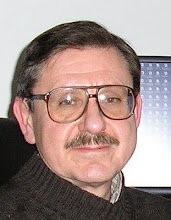 |
BORIS VYTAUTAS BAKUNAS I’m an educational psychologist and independent consultant whose major goal is to share the learning, thinking, and emotional self-help skills that will help people of all ages achieve the things they want out of life – in school, on the job, and in daily life. I’m also a teacher with over 29 years experience at the junior high, high-school, and college levels. Currently I teach graduate professional development courses for educators at St. Xavier University/International Renewal Institute, where my students say I’m “a knowledgeable, down-to-earth instructor with a great sense of humor.” I say, “If you love what you do, a sense of humor comes naturally.” My formal educational background includes Master's degrees in English and Special Education, and a PhD in Educational Psychology from the University of Illinois at Chicago. My research and articles have appeared in Applied Psycholinguistics, Learning, Principal, The Clearinghouse, and Education Digest. I’ve been a full member of the American Psychological Association since 1994. |
- Bookmark :
- Digg
- del.icio.us
- Stumbleupon
- Redit it
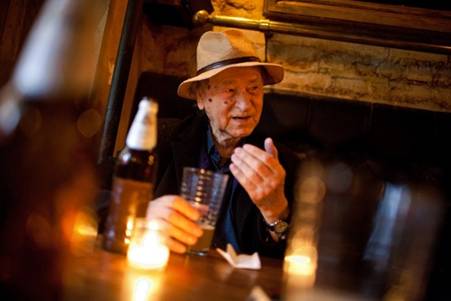
Filmmaker Jonas Mekas has a drink at Cafiero Lussier on East Second Street.
Ramsay de Give for The Wall Street Journal
Now 90 years old, Lithuanian-American filmmaker and archivist Jonas Mekas has spent a third of his life drinking at the Mars Bar in New York. The dive at the corner of Second Avenue and First Street opened in the early 1980s, when Mr. Mekas was busy renovating the future site of his Anthology Film Archives, a block away.
"We came into existence together, so it was friendship," Mr. Mekas said this week, chatting over Lithuanian beer and vodka shots at the Anyway Cafe, one of several East Village bars he frequents more often since Mars Bar closed last June (and was subsequently demolished). The demise of the bar, a refuge for the neighborhood's old-school bohemians, artists and rogues, prompted the filmmaker to edit more than 15 years of casual video footage into "My Mars Bar Movie." It will open a weekend run at Anthology today, Friday 13 April.
Watch the first five minutes of Jonas Mekas’s Mars Bar movie, opening today, Friday 13 April
- Bookmark :
- Digg
- del.icio.us
- Stumbleupon
- Redit it
- Posted by - (0) Comment
Lithuania’s ambassador to the U.S.:
We will never forget or underestimate the role of Lithuanian Americans in our struggle for independence

Lithuania’s ambassador to the United States, Žygimantas Pavilionis
Ambassador ŽygimantasPavilionis interviewed by Aage Myhre
Ambassador, you represent Lithuania in the United States, a country where around one million Lithuanians and people of Lithuanian descent live, as citizens of the United States. Are you to a certain degree also their ambassador?
As an ambassador of the Republic of Lithuania, I represent, first of all, interests of my country and my fellow citizens. Not all Lithuanian Americans are citizens of Lithuania, but they, nevertheless, kept close ties to their Homeland and helped greatly to keep memories of independent and free Lithuania alive. All the Lithuanians no matter where their live are equally important share of our nation. This is not only the official position of our Government, but also my personal idea I always had and believed in. Therefore, yes, I am to certain degree their ambassador as well.
Lithuanian-Americans played a significant role in the post-war years, until Lithuania's recovered independence in 1990-1991, by constantly exerting pressure on the U.S. President and leaders in other Western countries so that they would
pressure the Soviet Union to allow the Baltic countries freedom after the Soviet occupation taking place during World War II. Now, as more than 20 years have passed since the freedom bells rang, the question is whether the Lithuanian-Americans have a role to play also today? See our article https://vilnews.com/?p=8899
We in Lithuania will never forget and never underestimate the role of Lithuanian Americans in our struggle for independence. It will remain an indispensable part of our history. However, it sounds sometimes a bit strange when I hear that the mission of our countrymen abroad might be over. Not at all! Free, democratic and Western minded Lithuania we fought for and we have now is not the fact that will last forever by itself. On the contrary, we must remember that state-building is a continuous process, which requires our personal everyday efforts. So there are a lot of challenges both in our foreign and domestic policy we are facing now where the help and support from the Lithuanian diaspora is of vital importance. Economy, energy, security issues, education, social affairs– those and many other areas where we need our common work on it. To be more concrete and to illustrate what has been said I would like to name at least two significant projects which our Embassy is going to undertake together with the Lithuanian community in US this year - NATO Summit in May and World Lithuanian Economic Forum in September. Both evens will take place in Chicago, but we do expect an active engagement of Lithuanians from all over United States in them.
“The majority, I believe, are disappointed and discouraged with the present president’s seemingly unfriendly view toward Lithuanian-Americans and others abroad.” This said Regina Narusiene, President of the World Lithuanian Community, in a recent interview (see https://vilnews.com/?p=6704), based on a comment referred to in The Baltic Times, where President Grybauskaite should have said that most prominent U.S. Lithuanian émigrés, instead of focusing on developing U.S. - Lithuanian business ties, prefer providing political advice to the Lithuanian authorities, which may not be that necessary nowadays. She was supposedly “disappointed by Lithuanian émigrés’ inability to attract U.S.-based investments to Lithuania.” Here in VilNews we often hear Lithuanian-Americans say they do not feel welcome to their
home country, and that Lithuania's current president seems to antagonize them. What are the ambassador's comments to this?
I would not like to comment the words of President which I haven’t heard myself, but as far as I’m familiar with the position of President Grybauskaite towards Lithuanian diaspora I could only presume that these words were taken out of the context and that the President didn’t mean at all anything that could be interpreted as an “unfriendly view toward Lithuanian-Americans and others abroad”…
Having said that I might add that Lithuanians are well known in the U.S. for their persistence, hard and committed work and interesting achievements. We know Lithuanians from every generation who became successful politicians, businessmen, artists, social workers, etc. Just look at our honorary consuls – people like Krista Bard or Daiva Navarette are known in their areas of expertise. We also know a lot of Lithuanians from a younger generation who are well established in universities, research labs, have created their businesses. And some of them very successfully extended their business in Lithuania. Do you know that the company “VPA Logistics”, which operate the block train corridor project from Klaipeda to China, called “Sun”, was created by American-Lithuanians from New Jersey? And this project was developed with a great support of the government and the President itself. And there are much more concrete examples were Lithuanian Americans has invested, developed business in Lithuania or with Lithuania, but they have not yet very much advertised that.
| VPA Logistics – excellent example of business venture established by a Lithuanian American Mr. Vytautas ‘Victor’ Paulius is the Lithuanian American who founded the New Jersey company VPA (Vytatuas Paulius Associates) in 1967. UAB VPA was established in Lithuania’s port city Klaipeda in 1996, currently owning & operating over 30,000 sq.m. (320,000 sq.ft.) of state of the art cold storage space located within the Port of Klaipeda and Laistu International Trade Center (LITC), adjacent to Klaipeda State Seaport. VPA Logistics is the company behind the new SUN TRAIN that operates between China and Klaipeda. |
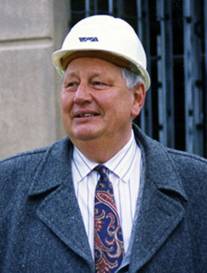 VYTAUTAS "VICTOR" PAULIUS |
In a meeting at your embassy in Washington last year, representatives of LAC (Lithuanian American Council) expressed their concern on a wide range of topics including Lithuania's developing energy policy, the country’s image in the international community, emigration issues and their demographic impact, the prospect of maintaining citizenship rights of recent immigrants, ongoing cooperation between organizations of the Diaspora and Lithuania, and minority issues in Lithuania. LAC representatives suggested that Lithuania would benefit significantly by availing itself of the expertise and knowledge found in the Diaspora communities in developing energy and security policies and a host of other areas such as environmental issues, ecology, medicine, economic development, and the promotion of improved interactions between the government and the people through non-governmental organizations (ref. https://vilnews.com/?p=5031). Has there been any official Lithuanian response to this?
The Embassy deals with various Lithuanian American organizations on a daily basis, including on issues that you just have mentioned. The meeting that you are referring to was held as a coordination meeting to compare our notes and to brief each other on the most important issues on which we should unite our efforts. As I already said, we greatly value the experience and experience that Lithuanians American can bring to their Homeland, and if there are concrete proposals or advices, we listen to them and use accordingly.
In November 2011, the Jewish Lithuanian Heritage Project hosted a roundtable “Think Tank” at your embassy. The theme of the discussion was, "A comprehensive Five Year plan to improve Lithuanian-Jewish relations: Cultivating Sunflowers." (ref. https://vilnews.com/?p=9949). In a response, one of our readers wrote: “Is this about the establishment of a new Judenrat to apologize for Lithuanian anti-Semitism? “If truth be told” having a holiday party at Lithuania’s D.C. Embassy is not revolutionary. What would be revolutionary would have been, and would be, is the prosecution of Lithuanian collaborators and SS members, the prosecution of today’s neo-Nazi youth groups, reinstatement of the ban against the display of the swastika and ending the noxious practice of the Uzgavenes holiday when people dress as Jews and beg on the street.” Harsh words?
Yes, words are harsh and a bit unfair as they fail to describe the whole picture of what’s happening in an attempt to confront the past. I recognize that the awakening process among Lithuanians has been a long one and is still ongoing, but no one can deny the progress that has been made. The Lithuanian government is committed to rehabilitating the heritage of Lithuanian Jewry, preserving the memory of those who perished in the Holocaust, and developing an educational program on the subject of the Holocaust so these atrocities would never happen again.
Let me be clear that Lithuania has never denied that there were those among us who collaborated with the occupying power of Nazi Germany and committed crimes against Lithuanian Jews. We know that we owe an immeasurable debt to our Jewish compatriots. The war crimes are never to be forgotten and never to be forgiven. Lithuania seeks to follow this path - all cases of genocide are meticulously investigated.
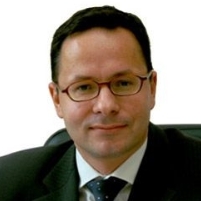 |
ZYGIMANTAS PAVILIONIS (Phonetic: pa-vill-i-OH-nis) Ambassador of the Republic of Lithuania Ambassador Pavilionis joined the Ministry of Foreign Affairs in 1993, where he was instrumental in achieving Lithuanian accession into NATO and the European Union. Between 1993 and 2009, he has held various high-level positions in the Lithuanian MFA, most focused on Lithuania’s relationship with the European Union. Most recently Ambassador Pavilionis acted as Ambassador –at-Large and Chief Coordinator for Lithuania’s Presidency of the Community of Democracies and Chief Coordinator for Transatlantic relations. He has a Master’s Degree in Philosophy and Postgraduate Diploma in International Relations and Doctoral Studies. He pursued both degrees in Vilnius University, Lithuania. Pavilionis is married to Lina Pavilioniene and has four sons. |
- Bookmark :
- Digg
- del.icio.us
- Stumbleupon
- Redit it
The Lithuanian FBI boss and his famous sister
- Posted by - (3) Comment
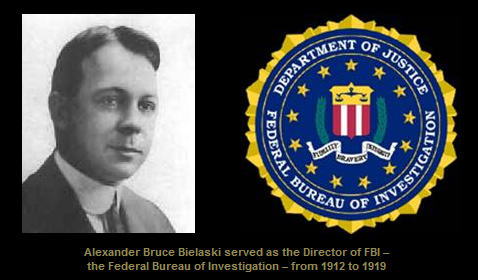
Many have heard of the legendary Director J. Edgar Hoover who led the FBI from1924 to 1972, but few have heard of the name Alexander Bruce Bielaski who served as the Director of the Federal Bureau of Investigation from 1912 to 1919. FBI was established in 1908, and Bielaski was its second Director.
Even fewer know that Bielaski was of Lithuanian origin. Although his family name was Polonized over time, his family roots can be traced directly back to Lithuania. His grandfather, Captain Alexander Bielaski (Beleskis) had been born on August 1, 1811, in Lithuania. Being raised under Czarist Russian occupation, Bielaski as a young man was educated in a Czarist Russian military school. After graduation, he had been commissioned as a Topographical Engineer Lieutenant and assigned to duty in the Russian Army.
Captain Alexander Bielaski (Beleskis) from Lithuania
With the start of the 1830-1831 Polish-Lithuanian Insurrection, Captain Bielaski resigned from the Russian Army and became severed on the Staff of General Dembinski. Dembinski’s Corps consisting of 3,500 Polish regulars and severalhundred Lithuanian guerrillasfought heroically to defendLithuania from the advancing Czarist Russian forces. Still thegallantry they displayed couldnot stop the superior numbers of the Russians and they wereforced to withdraw. In an epicmarch, General Dembinski led his small force back to Warsaw. During the retreat, Bielaski took command of a small 300 man rear guard whose mission was to hold the vital river crossing at all cost while the others fled tosafety. Fighting heroically, Bielaski forces successfully held the forge until the other rebels had reached safety. They did not withdraw until their numbers had been reduced to about 30 men which Bielaski then led into nearby woods. Through his skill the survivors successfully withdrew to Warsaw while constantly skirmishing with the pursuing Russians. By the time Bielaski reached Warsaw he only had one man still under his command. Bielaski then fought with distinction at the Battle of Grochowo until he was seriously wounded. A bullet ripped open one side of his face and pulled out his teeth before it came out of his neck. Although knocked to the ground, Bielaski continued to fight until he was stabbed in his shoulder by an advancing Russian. Being left on the battle field as dead, Bielaski recovered from his wounds only to learn that the insurrection which he had fought so valiantly for had been crushed.
Refusing to continue living under Russian occupation, Bielaski left Poland for France and eventually arrived in the United States. In 1835 he served as a civilian surveyor with the U.S. Army in Florida during the Seminole War and later settled in Illinois. He eventually obtained employment and gained fame as an engineer for the Illinois Central Railroad. Bielaski became an American citizen in 1841. After having lived in various parts of the country, Bielaski married Mary Ann Carey, an Illinois resident, in July 1842 and would eventually father three boys and four girls. While residing in Illinois, Bielski became an intimate friend of Abraham Lincoln who would later become the President of the United States. In 1844, Bielaski was appointed Chief Draftsman for the U.S. Bureau of Patents and moved with his family to Washington, D.C.
With the start of the Civil War, Bielski offered his services to the Union and returned to Illinois to serve as a Lieutenant with Company F of the 30th Illinois Volunteer Infantry Regiment. On September 1, 1861, Bielaski accompanied his regiment to Cairo, Illinois, where it was assigned to General John A. McClernand’s 1stBrigade of the District of Cairo under the command of General Ulysses S. Grant. Due to his prior military service, Bielaski was subsequently appointed an aide-de-camp to General McClernaud with the appointment being recommended by President Abraham Lincoln. In this position, Captain Bielaski took part in the Battle of Belmonton November 7, 1861, where the Union forces commanded by General Grant engaged the Confederate forces under the command of General Leonidas Polk. As the federal forces were moving against a Confederate entrenched artillery supported position, Captain Bielaski rode forward encouraging the advancing troops.
When his horse was shot out from under him, Captain Bielaski chose to continue the attack on foot. Seeing the national colors falling, Captain Bielaski quickly grabbed the fallen flag and continued its advance through withering enemy shot and shell. While carrying the Stars and Stripes of his new homeland, Captain Bielaski was killed by a cannon explosion and his body never recovered. Although the advancing column succeeded in driving the Confederates from their position, they were later forced to withdraw. General McClernaud is quoted as having stated that “A braver man never fell on the field of battle. His bravery was only equaled by his fidelity as a soldier and patriot. He died making the Stars and Stripes his winding sheet.” Although many men had fought with great distinction, like some battles in the Civil War, the Battle of Belmont held no strategic importance. Its only importance to the war was it showcased the talents of previously unknown General Ulysses S. Grant who eventually led the Union forces to total victory.

Captain Alexander Bielaski (Beleskis), Grandfather of FBI
Director Bielaski, was born on August 1, 1811, in Lithuania
With Captain Bielaski’s death, his older children immediately sought employment to support the family. His son, Oscar Bielaski, born on March 21,1847, in Washington, D.C. decided to follow in his father’s footsteps and joined the Union Army as a drummer-boy with a Union Cavalry Regiment. During lulls between battles, Oscar learned how to play baseball. After the war, he returned to Washington, where he secured a position as a government clerk and continued to play baseball. Oscar Bielaski went on to become one of the first professional baseball players. His professional career lasted five years during which time he played with the Washington Nationals, Baltimore Canaries, and Chicago White Stockings.
Another son, Alexander Bielaski, graduated from St. John’s College in Annapolis, Maryland and the Boston Theological Seminary and became a distinguished Methodist Episcopal Minister. The Reverend Doctor Bielaski and his wife, Roselle Bielaski, had three daughters and three sons.
Alexander Bruce Bielaski was born in Maryland in 1883
His son, Alexander Bruce Bielaski, who became the FBI Director, was born on April 2, 1883 in Montgomery County, Maryland. He attended George Washington University and after obtaining his law degree in 1904 received an appointment with the U.S. Department of Justice. His initial assignments included an appointment as a special examiner and reorganization of the Oklahoma court system following its admission as a state. Upon returning to Washington, Bielaski was assigned to the Bureau of Investigation and eventually became the Administrative Assistant to Director Stanley W. Finch who had been appointed as the first Director of the new organization. Upon Finch’s departure from the Bureau of Investigation, Bielaski was appointed to replace him. Bielaski remained as the Director of the Bureau of Investigation from April 30, 1912 to February10, 1919. During that time, Bielaski oversaw a steady increase in bureau resources and responsibilities.
After leaving the Bureau of Investigation, Bielaski entered into private law practice. While on a trip to Mexico in 1921, Bielaski was kidnapped by Mexican bandits and a ten thousand dollar ransom paid for his release. After being held for three days, Bielaski managed to escape and took the paid ransom money with him. During prohibition, Bielaski worke das an undercover decoy in a speak easy in New York which resulted in many arrests and convictions. He later went onto head the National Board of Fire Underwriters arson investigator team and serving as the President of the Society of Former Special Agents. Alexander Bruce Bielaski died on February 19, 1964.
Like his Lithuanian immigrant grandfather, Alexander Bielaski made an outstanding contribution to his nation and deserves an honoured place in Lithuanian-American history.
Source: Henry Gaidis, a contributor to the magazine Bridges. He is a member of the Board of Directors of JBANC and among his many interests is military history.
The FBI Director’s sister, Ruth Bielaski Shipley

Ruth Bielaski Shipley
Another rather unknown story among Lithuanian Americans, is that Ruth Bielaski Shipley (April 20, 1885 – November 3, 1966) was head of the Passport Division of the United States Department of State for 27 years from 1928 to 1955. In 1951 TIME MAGAZINE called her "The most invulnerable, most unfirable, most feared and most admired career woman in the U.S. Government."
Shipley was born Ruth Bielaski on April 20, 1885 in Montgomery County, Maryland. She attended high school in Washington, D.C., took the civil service examination and first worked for the Patent Office beginning in 1908. She was married to Frederick W. van Dorn Shipley in 1909. She left government service for several years while the couple lived in the Panama Canal Zone, where he worked in government administration until his poor health forced their return to the United States. They had a son born about 1911 who was given his father's name. She joined the State Department on August 25, 1914. Her husband died in 1919. In 1924 she became assistant chief of the Office of Coordination and Review.
She became head of the Passport Division in 1928, the first woman to hold the position, after twice declining the appointment. She succeeded foreign service officer Parker Wilson Buhrman and initially headed a staff of more than 70.
In 1930, she was a member of the United States delegation to the Hague conference on the codification of international law. In 1933, she led a successful campaign over the objections of some at the State Department, to prevent a magazine's advertising campaign from using the word "passport" to identify its promotional literature. She believed it "cheapened...the high plane to which a passport had been raised."
In 1937, she altered the Passport Division's policies and began issuing passports in a married woman's maiden name alone if she requested it, no longer followed by the phrase "wife of". She noted that the passports of married men never carried "husband of" as further identification.
Government policy with respect to passport issuance changed radically with the course of international relations during her tenure. The Neutrality Act of 1939 restricted travel by American citizens to certain areas and forbade transport on the ships of nations involved in hostilities. Shipley reviewed every application personally and the number of passports issued fell from 75,000 monthly in 1930 to 2,000. She also oversaw the issuance of new passports to all citizens abroad and the incorporation of new anti-counterfeiting measures into their design.
TIME 1951: "The most invulnerable, most unfirable, most feared and most admired career woman in Government."

According to a 1939 newspaper profile of Shipley, she had the authority "to comply with or to deny applicants, and in the main tends to grant as many as possible under the legal restrictions. When a complex case arises, however, she admits it to a board of advisers who constitute a supreme court of arbitration on the matter." In 1945 Fortune called her "redoubtable" and in 1951 Time described her as "the most invulnerable, most unfirable, most feared and most admired career woman in Government." That same year Reader's Digest wrote that: "No American can go abroad without her authorization. She decides whether the applicant is entitled to a passport and also whether he would be a hazard to Uncle Sam's security or create prejudice against the United States by unbecoming conduct."
Her authority was widely acknowledged and rarely challenged with success. Decisions of the Passport Division were not subject to judicial review during her years of service and her authority was described as "limitless discretion." Bill Donovan of the Office of Strategic Services (OSS) first tried to win favor with Shipley by hiring her brother. When she nevertheless insisted on identifying OSS agents by noting "on Official Business" on their passports, Donovan had to get President Roosevelt to reverse her. Her efforts to deny travel privileges to the children of U.S. diplomats were similarly overridden in the years following World War II.
In 1942, she was criticized for issuing a passport to a Polish-American Catholic priest who visited Joseph Stalin to plead for a democratic post-war Poland. President Roosevelt defended her. By the end of World War II her staff numbered more than 200.
Because of her personal role in issuing passports, many important figures corresponded with and met with her to document their reasons for travel abroad, including W. E. B. Du Bois, playwright Lillian Hellman,[20] and Manhattan project physicist Martin David Kamen.
In the 1950s she became the object of controversy when critics accused her of denying passports without due process on the basis of politics, while critics defended her actions as attempts to support the fight against Communism. Senator Wayne Morse called her decisions "tyrannical and capricious" for failure to disclose the reasons for the denial of passport applications. Her supporters included Secretary of State Dean Acheson and Senator Pat McCarran.
In September 1952, Secretary of State Dean Acheson called his relations with Shipley's "Queendom of Passports" "a hard struggle" and said that passport, travel and visa issues were "the most distasteful part of this job." In 1953, she refused Linus Pauling a passport for travel to travel to accept the Nobel Prize in Chemistry because, using the standard language of her office, it "would not be in the best interests of the United States," but was overruled.
Upon her retirement, an editorial in the New York Times attributed her reputation for "arbitrary" decision to the fact that she had to enforced newly restrictive government policies. Despite the conflict between individual freedom and government policies, it said, "there was never any doubt that Mrs. Shipley did her duty as she saw it."
She retired on April 30, 1955, when she reached the mandatory retirement age of 70. She said that she chose her successor, Frances G. Knight, herself. The State Department awarded her its Distinguished Service Medal upon retirement.
The American Jewish League Against Communism, one of whose officers was Roy Cohn, gave her an award for "a lifetime of service to the American people."
She died in Washington, D.C., on November 3, 1966. She is buried in the Congressional Cemetery in Washington, D.C.
Letter from Linus Pauling to Ruth B. Shipley. April 12, 1952
Pauling writes to request that Mrs. Shipley reconsider her decision not to issue him a passport. He sends a copy of his letter from Mr. Hassett, Secretary to the President, requesting a passport for Pauling. He describes, in detail, his revised itinerary so that it might help him obtain permission to travel overseas. Pauling recounts the pleasant meeting that he had with Mrs. Shipley last time they met over his passport, and requests to have another meeting with her. View Transcript
- Bookmark :
- Digg
- del.icio.us
- Stumbleupon
- Redit it
- Posted by - (1) Comment
“Give us this day our
daily harbour seal”
 The harbour seal is found along temperate and Arctic marine coastlines of the Northern Hemisphere. |
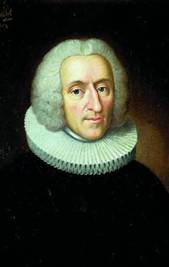 Hans Egede (1686 – 1758) was a Norwegian missionary, known as the Apostle of Greenland. |
Many of us remember our Lord’s Prayer, or Pater Noster as many call the most outstanding prayer of Christianity. One phrase goes as follows: “Give us this day our daily bread,..” This became an ever so slight nut to crack for the North Norwegian priest Hans Egede when he came to Greenland to preach in the 1700s. The indigenous people who populated the world's largest island, the Inuits, did not know what bread was!
But the priest found a solution, and in his translation to Inuit language the phrase became therefore logically enough, "Give us this day our daily harbour seal." Because it was these seals that were the most important element of the Inuit food chain at the time...
It was Hans Egede, often called the Apostle of Greenland, who founded the town of Nuuk (Godthåb), capital of today's Greenland. His statue stands solidly on its base in the outskirts of the town.
Nuuk (Godthåb), the capital of Greenland, offers colourful architecture where the winter bites as coldest
 I sit at Kastrup Airport near Copenhagen, Denmark, an early February morning. Waiting to border the Scandinavian Airlines flight to Kangerlussuaq Airport in Greenland. Then comes the message: The flight is cancelled. Luckily I get on a plane from Greenland Air, and a couple of hours later I am sitting in a red Boeing 757 heading northwest. I have been awarded a seat between two mildly said overweight Inuits, Eskimoes as we used to call them in the past. It smells of sweat and I am unable to find room for my arms on the armrests. After four and a half hour of torment we land in the icy wilderness. The temperature outsideis -40C, inside the terminal building it is a little warmer. But not much.So I'm very happy when I finally, after several hours waiting time, get on board a red propeller plane, a Dash 7, flying me to Greenland's capital Nuuk further south on the island. The trip takes only an hour.
I sit at Kastrup Airport near Copenhagen, Denmark, an early February morning. Waiting to border the Scandinavian Airlines flight to Kangerlussuaq Airport in Greenland. Then comes the message: The flight is cancelled. Luckily I get on a plane from Greenland Air, and a couple of hours later I am sitting in a red Boeing 757 heading northwest. I have been awarded a seat between two mildly said overweight Inuits, Eskimoes as we used to call them in the past. It smells of sweat and I am unable to find room for my arms on the armrests. After four and a half hour of torment we land in the icy wilderness. The temperature outsideis -40C, inside the terminal building it is a little warmer. But not much.So I'm very happy when I finally, after several hours waiting time, get on board a red propeller plane, a Dash 7, flying me to Greenland's capital Nuuk further south on the island. The trip takes only an hour.
 I have come to Nuuk to monitor the construction of town-houses I had designed during the previous year from my architect office in Vilnius. I could hardly believe my ears when, a few months ago, I was told that the colours we should use was bright yellow, turquoise, pink and purple. All in pastel tones.
I have come to Nuuk to monitor the construction of town-houses I had designed during the previous year from my architect office in Vilnius. I could hardly believe my ears when, a few months ago, I was told that the colours we should use was bright yellow, turquoise, pink and purple. All in pastel tones.
Now I stand here in the bitter winter cold, watching the walls, manufactured in Lithuania, being lifted into place. I see that many of the houses around are also unusually colourful. Perhaps it is so that the colours give a little warmth in the otherwise barren, windswept winter landscape. Or is colour perception different for Inuits and other indigenous peoples than for us 'younger' versions of the human race?
The town of Nuuk is barely 300 years old, but this area has a long history of settlement, first occupied by the old pre-Inuits, the Paleo-Eskimos. Their Saqqaq culture dates as far back as 2200 BC when they lived in the area around a now abandoned settlement called Qoornoq. Over time the area was occupied by the so-called Dorset culture, which, however, disappeared from the Nuuk district, even before year 1000. The Norwegian Viking Erik the Red founded the first European settlements here, at the end of the 900s.The area was after that inhabited by the Vikings through a few hundred years. Inuits and Norwegians lived side by side until around 1500 when the Norse settlements ceased, probably due to changes in climate. It was also here the Viking ships sailed further west and came to Nova Scotia in today's America in the year 1000.
The Viking who led his armada of Viking ships to America was Leif Ericson. He came from a long line of explorers, and unfortunately murderers as well. Leif's great-great-great uncle, Nadod, discovered Iceland in about 861, and Leif's father, Erik Thorvaldson, otherwise known as Erik the Red, discovered Greenland around 970-980. After his father died, Erik moved to a different area of Iceland and got married. The next two incidents shaped the future. Erik himself was exiled and outlawed twice; the first time because his slaves caused a landslide that ruined a man's property. The second time, Erik attempted to get a family heirloom back, he and the men supporting this act, were attacked, and ended up murdering the man's sons and several of his supporters. So once again Erik was outlawed. Erik decided to venture out and explore during his three years of exile. It was during this time, about 970 A.D. that Leif was born to Erik the Red.
Leif's voyage to America was planned and had a forceful, brave, shrewd leader who was careful in all things. His discovery, then, was not an accident, as those who give too little credence to Viking navigational skills intimate. He set sail probably in 995, passed Markland (Labrador), and reached Newfoundland, where his thirsty crewmen drank dew from the grass. Here, in what probably was Leif's Vinland, the men decided to winter, noticing that the days were more equitable in length than at home in Greenland.
In addition to building lodgings, the men cut timber and hunted. Their tasks were eased by the fact that there were no natives in the vicinity. On one hunting and exploratory expedition, one Turk, who had lived in warmer climates, returned with grapes. Consequently the men began to cut vines and harvest grapes in addition to gathering timber. Because of the new find, Leif named the area Vinland, which subsequently became known as Vinland the Good. Where in Newfoundland Leif wintered is still a matter of controversy, but most leading scholars are firmly convinced that it was on that island. Grapes grew wild in quantity in Newfoundland until as late as the middle of the 17th century, because the climate then was much more benign than it is today.
This has been the story of a missionary who had to find a re-phrasing of the Lord's Prayer. It has also
been about a totally different colour understanding than what we are accustomed to, and it has been about Norwegian Vikings who more than 1000 years ago came to America, 500 years before Columbus 'discovered' the vast continent on the other side of the Atlantic Ocean.
Creativity, discovery urge, ability to survive and thrive even in harsh environments. This is what we can
learn from these people.
And in the midst of it all there are some colourful Lithuanian houses...
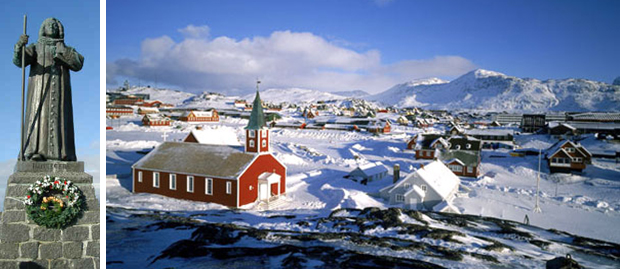
It was Hans Egede (1686-1758) who founded the town of Nuuk, Greenland's capital. But this is not exactly an overcrowded part of our world, so the population of the capital is still only around 15,000.
Photo: Cirrusnetwork.net
Aage Myhre, Editor-in-Chief
aage.myhre@VilNews.com
- Bookmark :
- Digg
- del.icio.us
- Stumbleupon
- Redit it
- Posted by - (0) Comment
World Lithuanians celebrating their home country!
Lithuanians all over the globe have during the past month been busy celebrating the country's national days and more. The Lithuanian spirit is alive and well in all corners of the world!
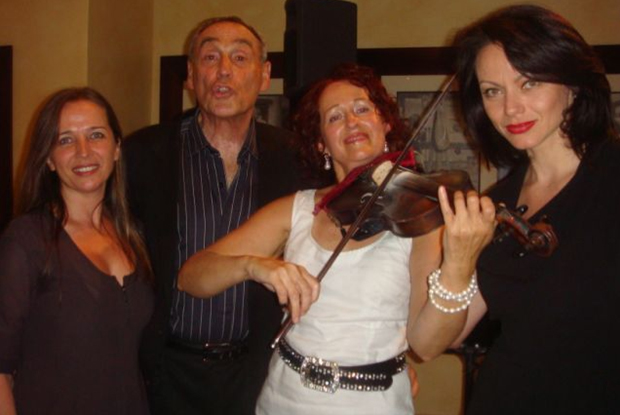
Johannesburg, South Africa
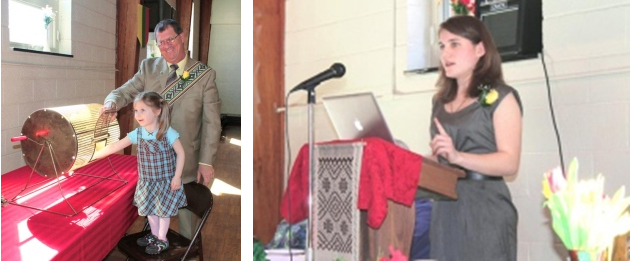
Frackville, Pennsylvania, USA
JOHN E. USALIS/Staff Photo Ann P. Domalakes, Frackville, a senior at the Franciscan University of Steubenville, presents a summary of her senior thesis on 14th century Lithuanian leader Vytautus at Sunday's Amber District meeting of the Knights of Lithuania at Annunciation BVM Church hall, Frackville. USA. http://republicanherald.com/news/knights-of-lithuania-hold-regional-meeting-in-frackville-1.1284531
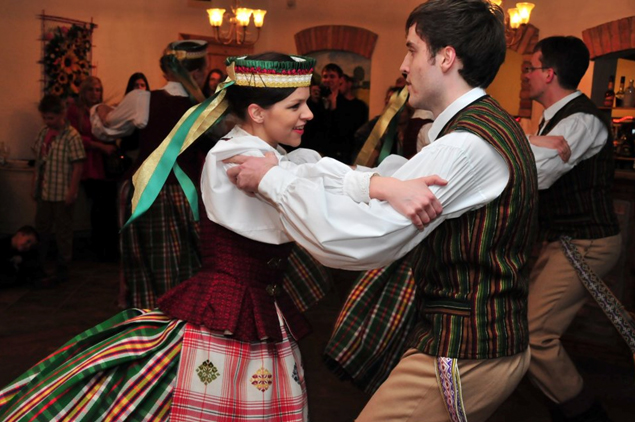
Stockholm, Sweden
- Bookmark :
- Digg
- del.icio.us
- Stumbleupon
- Redit it
Thanksgiving
- Posted by - (1) Comment

The chess game that Pedro’s father made by his own hands.
Photo: Aage Myhre.
My friend, a journalist with the name Pedro, from Chile, gave me this chess game in 1987. At the end of the 1970s he had become victim of the military rule of Dictator Augusto Pinochet in his home country. Pedro had written some slightly critical comments about the General in his newspaper, and was given 24 hours to disappear out of Chile. The chess game was the only thing he brought with him in the backpack, except the bare necessities of clothing and food. It was his father who had carved the beautiful pieces out of wooden blocks, and the game was, therefore, the dearest object Pedro owned. He had over some time come to live in political asylum in Norway and had lived in Oslo for a few years when I met him. After a time of acquaintance he gave the chess game to me. He explained the reason: "You are the first and only Norwegian I have been able to communicate with, the only one who has shown me respect and interest since I came here."
The chess game I got from Pedro is standing here, next to me. Just to look at it makes me think. I think of a father who sat for months and cut out each individual shape very accurately and carefully from pieces of wood he had collected. I know that Pedro had been seeking asylum in Norway because he had told the truth about the abuser Pinochet. I know he spent several years in Norway without being met with genuine interest and love. The fact that my nation’s people, so quick and clever when it comes to aid and support of other peoples, not always is very good at communicating face-to-face with people who desperately need someone to talk to.
I'm glad I could play a role in Pedro's life. I am very grateful for the gift he gave me. The dearest object Pedro owned has become extremely dear to me. For all that it represents and communicates.
Thanksgiving Day is Thursday 24 November
Thanksgiving or Thanksgiving Day, is a holiday celebrated in the United States on the fourth Thursday in November. It has officially been an annual tradition since 1863, when during the Civil War, President Abraham Lincoln proclaimed a national day of thanksgiving to be celebrated on Thursday, November 26. As a federal and popular holiday in the U.S., Thanksgiving is one of the major holidays of the year. Together with Christmas and the New Year, Thanksgiving is a part of the broader holiday season.
The event that Americans commonly call the "First Thanksgiving" was celebrated to give thanks to God for guiding them safely to the New World. The first Thanksgiving feast lasted three days, providing enough food for 13 Pilgrims and 90 Native Americans. The feast consisted of fish (cod, eels, and bass) and shellfish (clams, lobster, and mussels), wild fowl (ducks, geese, swans, and turkey), venison, berries and fruit, vegetables (peas, pumpkin, beetroot and possibly, wild or cultivated onion), harvest grains (barley and wheat), and the Three Sisters: beans, dried Indian maize or corn, and squash. The New England colonists were accustomed to regularly celebrating "thanksgivings"—days of prayer thanking God for blessings such as military victory or the end of a drought.
Read more at: http://en.wikipedia.org/wiki/Thanksgiving_(United_States)
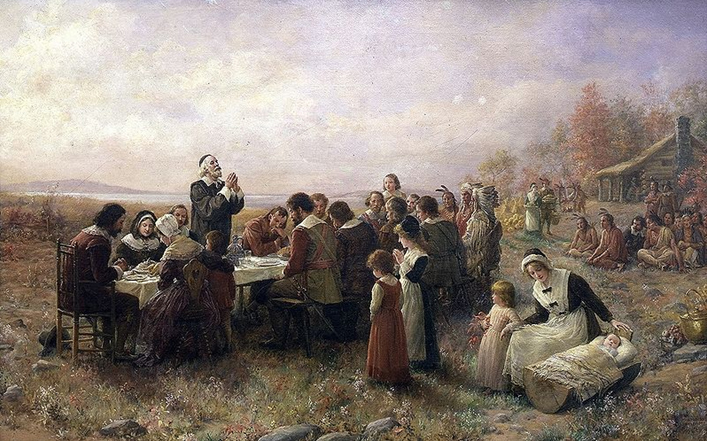
The First Thanksgiving at Plymouth.
By Jennie A. Brownscombe. (1914).
- Bookmark :
- Digg
- del.icio.us
- Stumbleupon
- Redit it
- Posted by - (1) Comment

10 000 Lithuanians live
in Arizona, USA
“More than national pride, being Lithuanian is a state of mind.” This can be read at a new Facebook page, “Lithuanians of Arizona”, which was recently established.
Some active individuals among the approximately 10 000 Lithuanians who live in this hot state at the border of Mexico have decided to create a new communication platform to better achieve dialogue and information exchange between all Lithuanians who live in the state. The initiative for the Facebook page was taken after a large picnic event early this November. This is what the initiators write:
“During the annual Arizona Lithuanian Community Picnic in Tumbleweed Park, in Chandler, Arizona, we decided to start a Facebook group to complement the www.lithaz.org web site. This group is dedicated to Lithuanians in Arizona, around the world, or to anyone who is Lithuanian in mind and spirit.”
VilNews applauds the initiative, and we are happy to make our columns available to news updates and information from Arizona and other states or countries where Lithuanians live!
Lithuanians Of Arizona are now on Facebook.
Click here to join them!
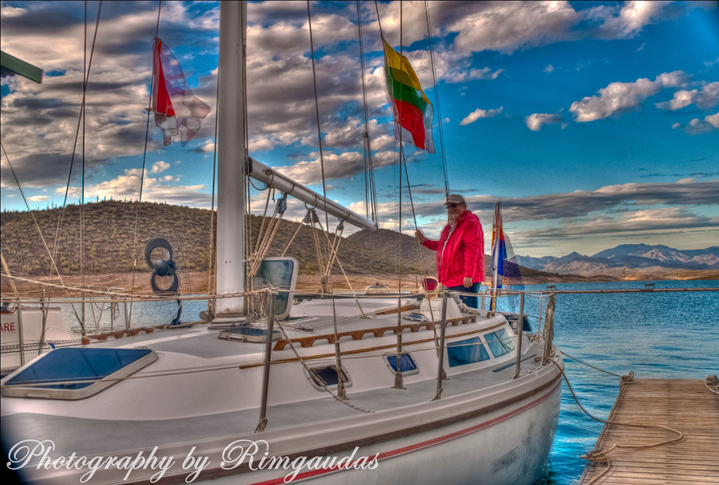
"I found the Lithuanian Flag at Scorpion Bay Marina, Lake Pleasant Arizona, United States of America aboard "Miss Behavin III". 12 November 2011.
Photography by Rimgaudas
Rimgaudas P. Vidziunas aka "Rim", Mesa, Arizona
- Bookmark :
- Digg
- del.icio.us
- Stumbleupon
- Redit it
- Posted by - (1) Comment

Lithuanians started to come to Arizona before World War I. Then, as now, it was the warm and dry climate of Phoenix and Tucson, located in the desert regions of southern Arizona, that attracted them. The first Lithuanians came to Arizona to recover from lung illnesses, rheumatism or arthritis. Being ill and few in number, they did not leave a major cultural legacy.
The number of Lithuanians in Arizona started to increase only after 1935. Younger ones took up farming, the trades, businesses and worked in the industry, but most of them came to retire.
During World War II a number of military training bases were located in the Arizona desert and many young men became acquainted with Arizona's wonderful climate while in military service. Many of them returned to Arizona after the war, starting the fast growth of Arizona cities. Among the returning veterans were a number of Lithuanian-Americans as well.
A pleasant climate, beautiful desert, and urban growth also attracted high-tech industries, scientists, engineers and technicians.
The 2000 US census showed about 10,000 Arizonans acknowledging their Lithuanian roots. Majority of them were second, third and later generation Americans and children of mixed ethnic marriages.

Above and below: Photos of Lithuanians Of Arizona in AZ Lithuanian Party, November 6, 2011
|
|
|

Lithuanians in Arizona:Lithuanian Roman Catholic MissionBefore 1968Rev. Antanas Bertašius, a priest who recently arrived from Lithuania, started work at St. Gregory's Parish in Phoenix in 1953. He also found time to provide pastoral services to local Lithuanians. But soon, in 1954, he was transferred to the El Paso diocese and for a long time Phoenix was without a Lithuanian priest.
Establishment of the MissionFinally, in 1968, through the efforts of Justinas and Teofilė Šaulys, a Lithuanian Mission was established in Phoenix and Rev. Antanas Valiuška was assigned as its chaplain. In the fall of the same year a mission support committee was formed. Because Phoenix Lithuanians came from three distinct groups (old immigrants, new immigrants, and those who grew up in the U.S. or English speakers), all three groups were represented in the committee: chairman Justinas Šaulys represented the new immigrants, treasurer Romualdas Stasiūnas - the old immigrants, and secretary Betty Medzius - the English speakers. Among the first supporters of the Mission were Leonardas Strikauskas, Jenny Petrošius, Betty Medzius, Justinas Šaulys, Emilija Josen, Marijonas Dambrauskas, Konstancija Rudaitytė, Romualdas Stasiūnas, B. Millius, Algis Rimavičius, Vytas Sinkus, J. Globis, Jonas Kranauskas, and L. Behnle. On Sunday's after the Mass, local Lithuanians had an oportunity to associate with each other. Often Mass was followed by meetings, discussions, and other events. From the very start, the Lithuanian Mission found a home in the very nice facilities of the Sacred Heart Home of The Little Sisters of the Poor) Rev. A. Valiuška was allowed to live there rent-free, which he did for about a year. The chapel within the spacious Home was used for Lithuanian Mass, funerals, Stations of the Cross, rosaries, choir practice and even meetings. The sisters even joined in Lithuanian activities. Sister Aimee often sang with the choir and solo, Sister Gabriele played on the organ, and Sister Teresa decorated the altar for the Lithuanian Mass. Since the Sisters did not charge for the use of the chapel, Lithuanians showed their gratitude by participating in large numbers at events and bazaars organized by the Sisters. Lithuanians prepared food and lotteries for these events. Proceeds from these events helped the finances of the Home. Key organizers of the Lithuanian contributions were Vytautas and Lucija Mozartas, William and Angie Faber and Stanley and Sally Pudinas. In 1969 the Lithuanian Mission started publishing a newsletter in Lithuanian named Arizonos Lietuvis ("Arizona's Lithuanian") with news of the Lithuanian parish.For English speakers a part, first prepared by Betty Medzius and later by Violet Kurilla, was in English. For a long time the newsletter was published by Leonardas Strikauskas, who donated his time and effort. The newsletter survived on the donations of the parishioners. In 1969 Rev. A. Valiuška acquired a small house, because the Sisters needed more space for the old people they took care for. After a year, the house was slightly expanded, but it was still too small for the activities of the Mission. In 1973 a bigger house was bought, where meetings, choir practice and other activities could be accommodated. On Feb. 15, 1970, when Lithuanians in Phoenix were celebrating Lithuanian Independence Day, Edward McCarthy, the new Bishop of Phoenix participated in the Lithuanian Mass with a nice sermon. The Mass was attended by bout 200 people. Music professor Aleksandras Aleksis, a visitor from Waterbury, CT, prepared the church choir to sing Lithuanian religious hymns and himself sang solo Panis Angelicus. After Mass the bishop met with Lithuanians and was presented with a gift of Lithuanian art. 1971 was a year of expansion for the Mission due to the arrival of more Lithuanians in Phoenix. Among them were Stanley and Marijona Druktenis, Marija Gilys, Joe and Ann Lalis, Petras and Jadvyga Maldeikis, Antanas and Ona Metrikis, Pijus and Adolfina Mickevičius, Bruno Steponaitis, Mačys and Z. Pagrandis, Jonas Šereiva, Veronika Usoris, Joe Biknius and others. They joined the activities of the Mission and the wider cultural activities of the local Lithuanian community. Ona Metrikis was a musicologist, she quickly took charge of the Lithuanian choir, and the quality of the singing during Mass started to improve. When Ona Metrikis moved to California, the leadership of the choir was taken by Sister Gabrielle, later by Evelyn Winters, and later yet by Rose Sanders.
Moves to Sun City and GlendaleAfter a number of years the city of Phoenix decided to build an expressway through the area and the Home operated by the Sisters was torn down. For several years until Rev.Valiuška moved to California, Lithuanian Mass was celebrated at the Sunland Memorial Park chapel in Sun City. After 40 years of service in Indian-Mexican parishes in Tucson, on February 24, 1989, Rev. Romanas Klumbys was confirmed as the chaplain of the Lithuanian Mission. He moved to Sun City. Because of his good connections with Mexican parishes he was able to transfer the Lithuanian religious services to the Our Lady of Guadalupe chapel in the nearby town of Glendale, Arizona. After retiring from papal service in the Vatican, Archbishop Paul Marcinkus moved to Sun City, Arizona in January, 1991. When Rev. Klumbys passed away on October 11, 1991, Archbishop Marcinkus assumed the pastoral duties at the Lithuanian Mission until his own death on February 20, 2006. Because the Archbishop did not accept any financial compensation for his service to the Lithuanian Mission, the Mission made substantial donations to the St. Casimir Lithuanian College at the Vatican in the Archbishop's name twice a year: on his birthday and on his name's day. After the Archbishop's death, Lithuanian Mission stopped functioning.
Mission Support CommitteeIn the performance of his duties and in serving the Lithuanian public, the chaplain was assisted by members of the Mission Committee. The Committee was headed by (the list is incomplete): · 1968 - 1971 Justinas Šaulys · 1971 - ???? Petras Maldeikis · ???? - 1992 Antanas Ambraška · 1992 - 1996 Ona Adomaitis · 1996 - 1998 Aldona Klemka · 1998 - 2006 Algis Kvedaras Lithuanian Mass and other events organized by the Mission served the spiritual and social needs of the Phoenix area Lithuanians. Coffee and snacks after Mass was very popular. Other Lithuanian organizations (e.g. Arizona Chapter of the Lithuanian American Community) used these opportunities to hold their meetings as well. From 1991 to 1997, the Mission organized Lithuanian Christmas Eve dinners. In April of 1997, Mission organized the 50th anniversary celebration of Archbishop Marcinkus priesthood. Deaths and illnesses continued to diminish the number of regular attendees. By the fall of 2000, the numbers were down to 15-20 and Lithuanian Mass became celebrated only twice a month. On some important holidays, however, the numbers would swell to as high as 40. |

|
Lithuanians in Arizona: Lithuanian Choir |
|
With the start of Lithuanian church services at the chapel of the Sacred Heart Home of the Little Sisters of the Poor in 1068, a group of Lithuanian worshippers started to accompany the services with Lithuanian church hymns. Encouraged by Rev. A. Valiuška, the mymn singers started to form themselves into a choir, periodically getting together for choir practice. An Irish-American resident of the Home and a former professor of drawing and music at Temple University and aunt of Arizona governor Bruce Babbitt, Margaret M. Walsh, agreed to lead the choir and also became the first organist for the Lithuanian Mission. Although she knew no Lithuanian and her hearing was getting wore, Margaret Walsh was able to perform these duties for about two years. Some of the Sisters found it enjoyable to join in the singing. Sister Aimee sang solo and with the choir and Sister Gabrielle helped out on the organ. The choir made a major step forward with the arrival in the Phoenix area of the Metrikis family in the spring of 1971. Mrs. Ona Metrikis was musically educated. She was an accomplished pianist, composer, and conductor. She took charge of the choir and soon the quality of the singing was greatly improved. The choir also expanded its repertoire. During Lent in 1972, the choir performed a concert of religous hymns. The performance included one of Ona Metrikis compositions "Hymn to St. Casimir." On 1973 Shrovetide the choir gave a concert in the Ukrainian Hall. The choir accompanied by Ona Metrikis on the piano also contributed to the cultural part of the Lithuanian Independence Commemoration. The most active period in the life of the choir, however, came to an end, when Ona Metrikis moved back to Los Angeles in 1975.For a time the leadership of the choir was taken by Sister Gabrielle, later by Evelyn Winters, a resident in the Home and former pianist, and from September 1976 by choir member Rose Sanders. |
Lithuanians In Arizona:Dance Group "Saulė" |
|
In 1999, through the efforts of Dalia Motiejunas and Aldona Vaitkus, a Lithuanian folk dance group called "Saulė" (or Sun in Lithuanian) was organized in Arizona. It began with veteran dancers living in the metropolitan areas of Phoenix, Tucson, and Casa Grande, but in time expanded to include a number of younger dancers. The original goal for the group's formation was to perform at the upcoming 11th Lithuanian Folk Dance Festival in Toronto on July 2, 2000. Dalia Motiejunas agreed to become the dancing instructor for the group and attended a week of intensive training at Dainava in Michigan in the summer of 1999. To practice dancing a location was found equidistant from Phoenix and Tucson - the American Legion hall in Florence, Arizona, and practice began in the fall of 1999. During a period of nine years (2000-2008) "Saulė" performed at a number of cultural events (see the partial list below). Eventually, however, dance instructor Dalia Motiejunas and several dancers moved away. Unable to find replacements, the dance group ceased to exist after participating at the Lithuanian Folk Dance Festival in Los Angeles on July 6, 2008. Practice for this festival was held at the Casa Grande home of Carol and Don Adamavich. |
|
"Saulė" dancers in Florence, Arizona, in the spring of 2000: in the front row from the left are Siga Eidukonis, Aldona Vaitkus,Violeta Juodakis, Maryte Tallat-Kelpsa; Ruta Motiejunas, Antonija Petrulis, and Rima Reklaitis; in the back are Kestutis Eidukonis, Rimas Vaitkus, Rimtis Tallat-Kelpsa, director/instructor Dalia Motiejunas, Don Adamavich, Algis Motiejunas, and Vytas Reklaitis. |
|
Some events at which "Saule" performed |
|
· June, 2000: Performance for locals in Florence, Arizona · Jul. 2, 2000: 11th Lithuanian Folk Dance Festival in Toronto · Oct. 14, 2000: Tucson Heritage Experience Festival · Feb. 11, 2001: Lithuanian Independence Day Commemoration · Feb. 10, 2002: Lithuanian Independence Day Commemoration · Jul 3. 2004: 12th Lithuanian Folk Dance Festival in Chicago · Jul 6. 2008: 13th Lithuanian Folk Dance Festival in Los Angeles |
- Bookmark :
- Digg
- del.icio.us
- Stumbleupon
- Redit it
VilNews e-magazine is published in Vilnius, Lithuania. Editor-in-Chief: Mr. Aage Myhre. Inquires to the editors: editor@VilNews.com.
Code of Ethics: See Section 2 – about VilNews. VilNews is not responsible for content on external links/web pages.
HOW TO ADVERTISE IN VILNEWS.
All content is copyrighted © 2011. UAB ‘VilNews’.

 Click on the buttons to open and read each of VilNews' 18 sub-sections
Click on the buttons to open and read each of VilNews' 18 sub-sections 















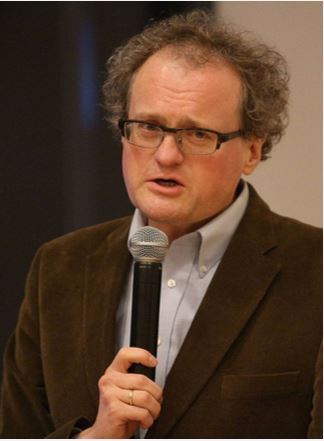
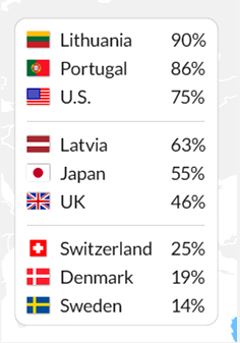
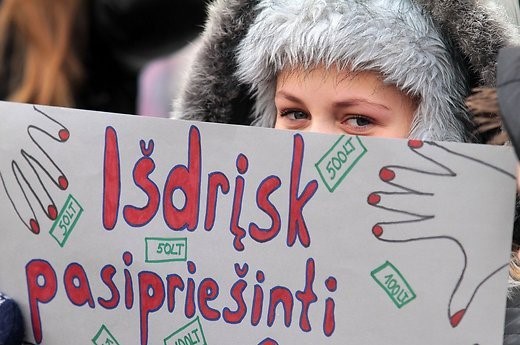


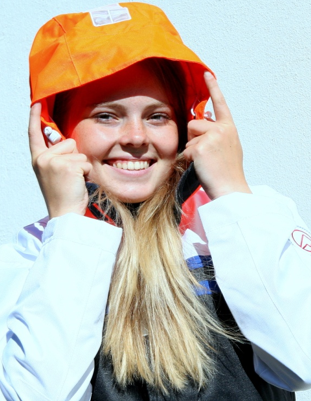
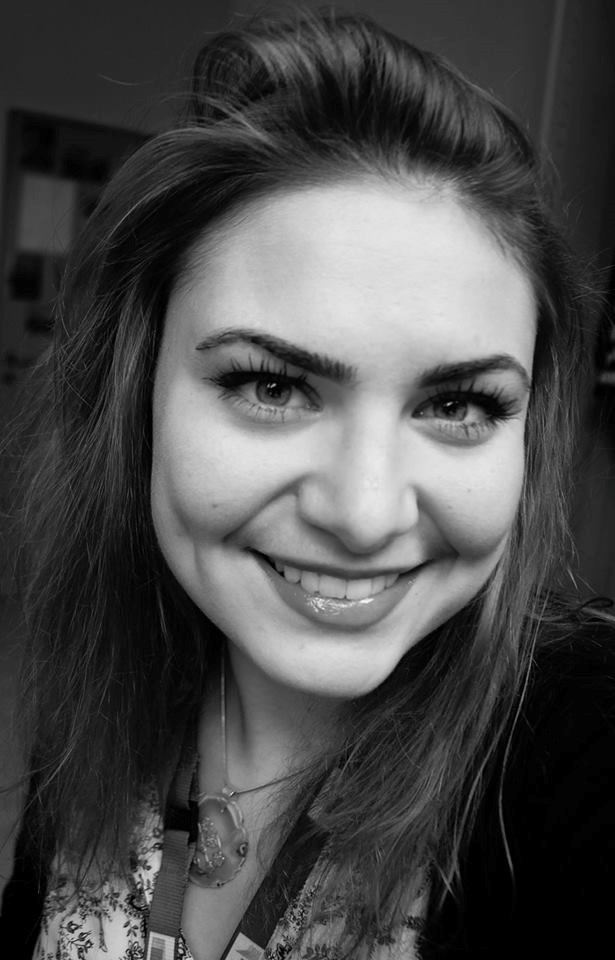
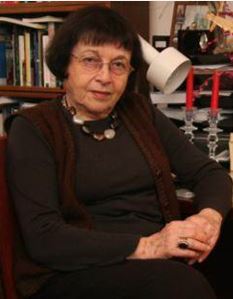
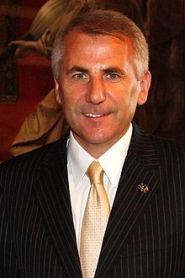
.jpg)
